1
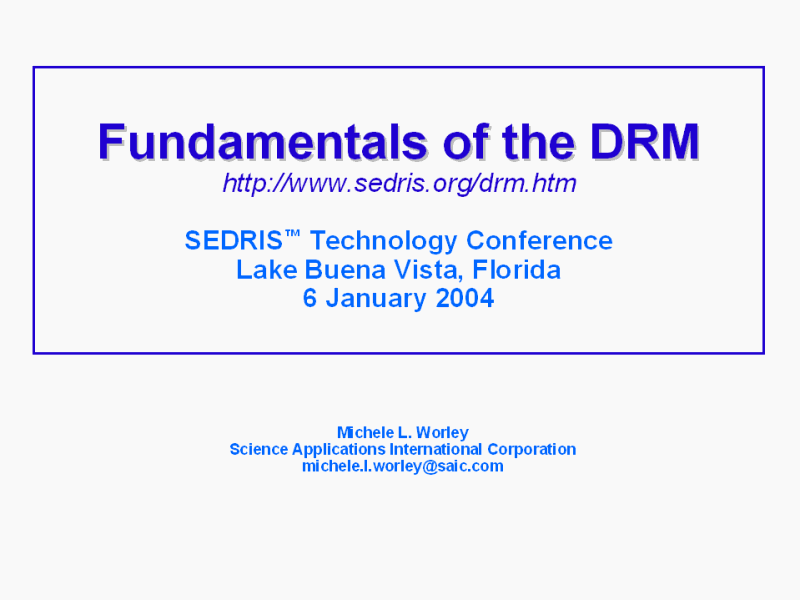
PPT Slide |
2
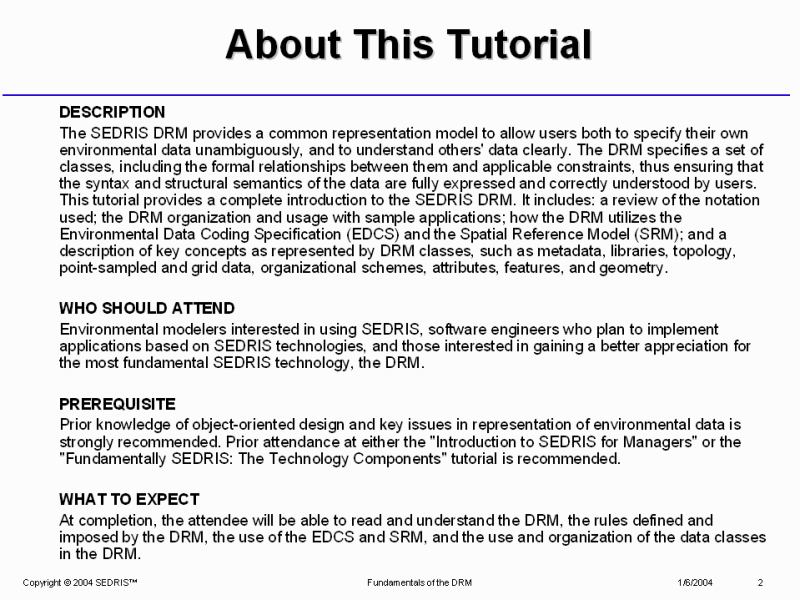
About This Tutorial |
3
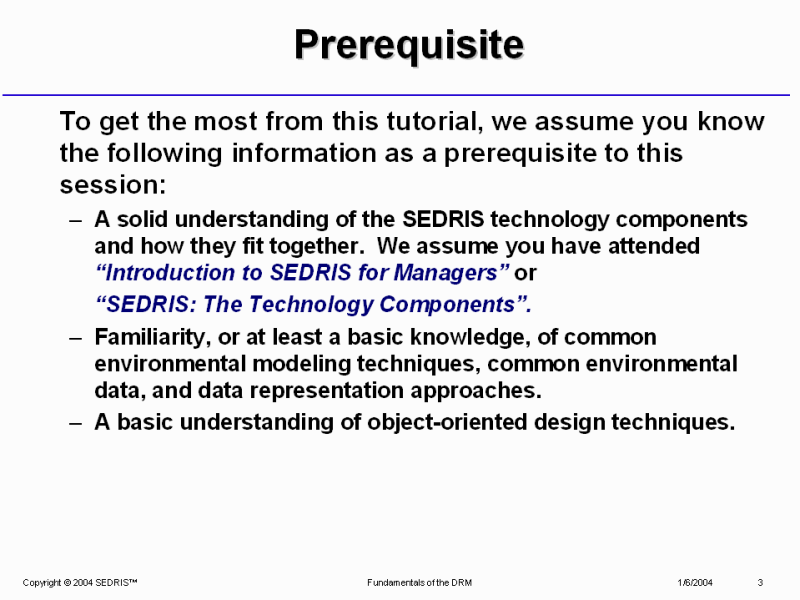
Prerequisite |
4
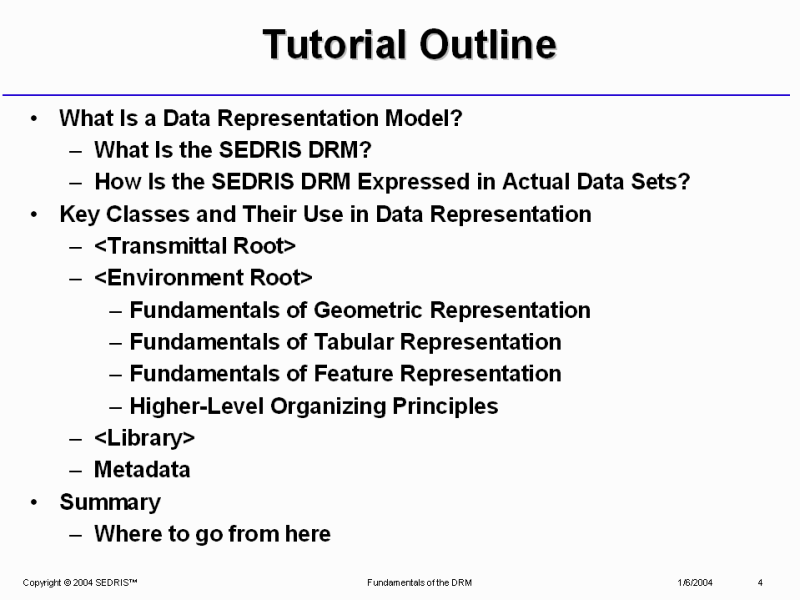
Tutorial Outline |
5
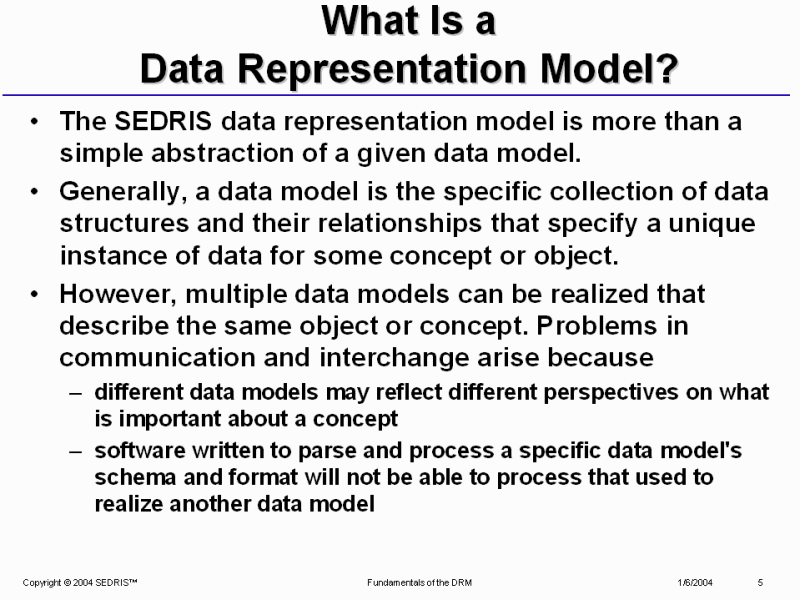
What Is a
Data Representation Model? |
6
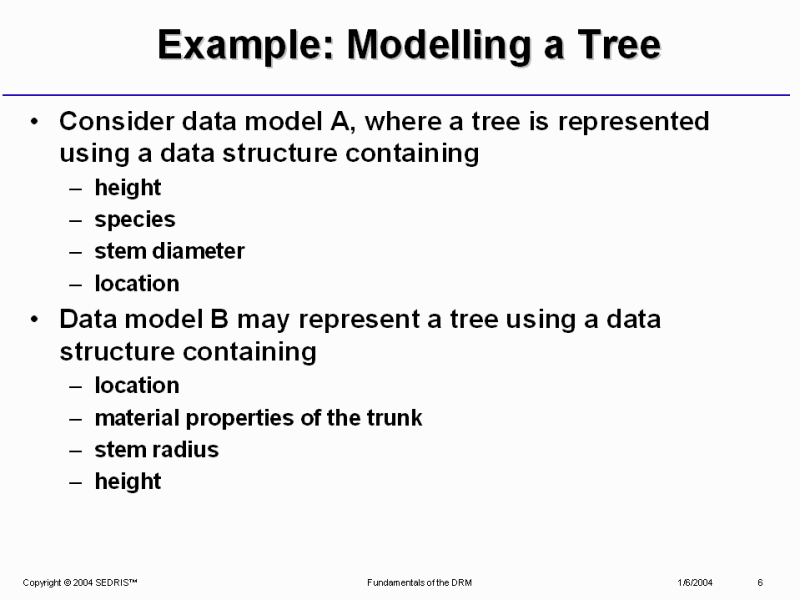
Example: Modelling a Tree |
7
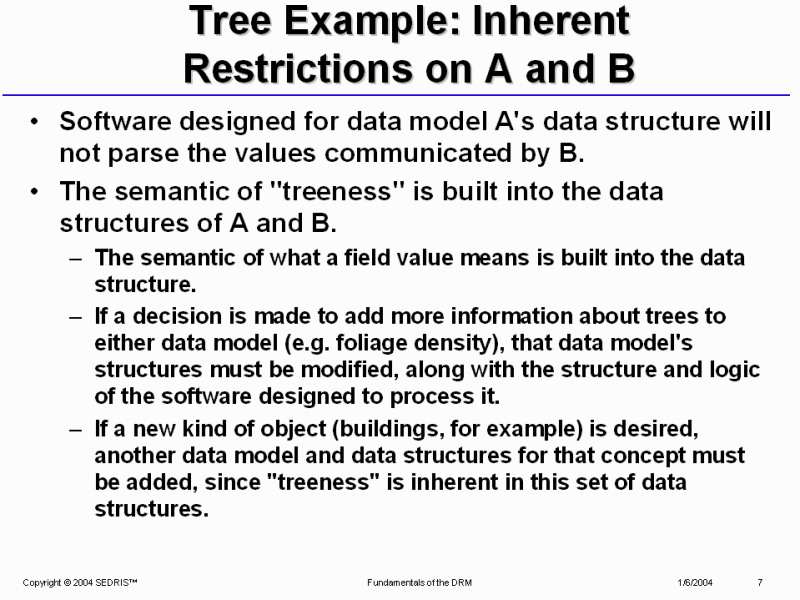
Tree Example: Inherent Restrictions on A and B |
8
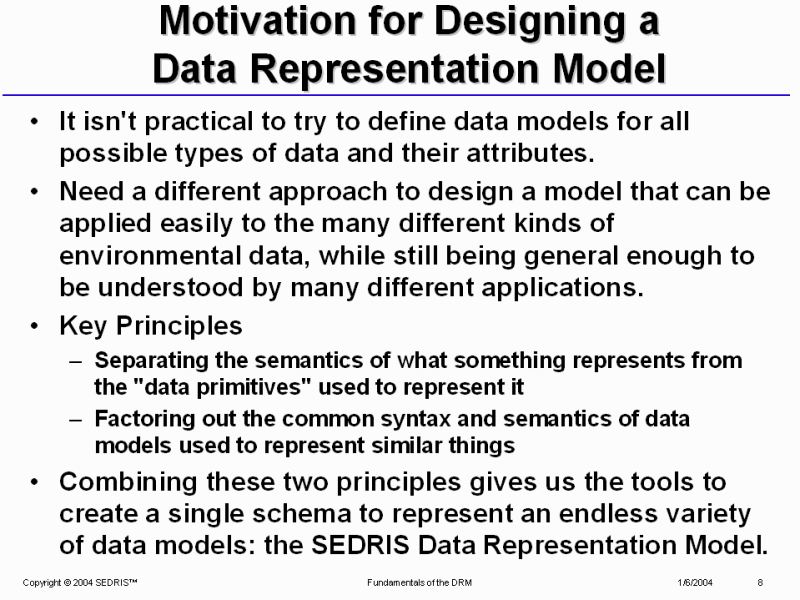
Motivation for Designing a
Data Representation Model |
9
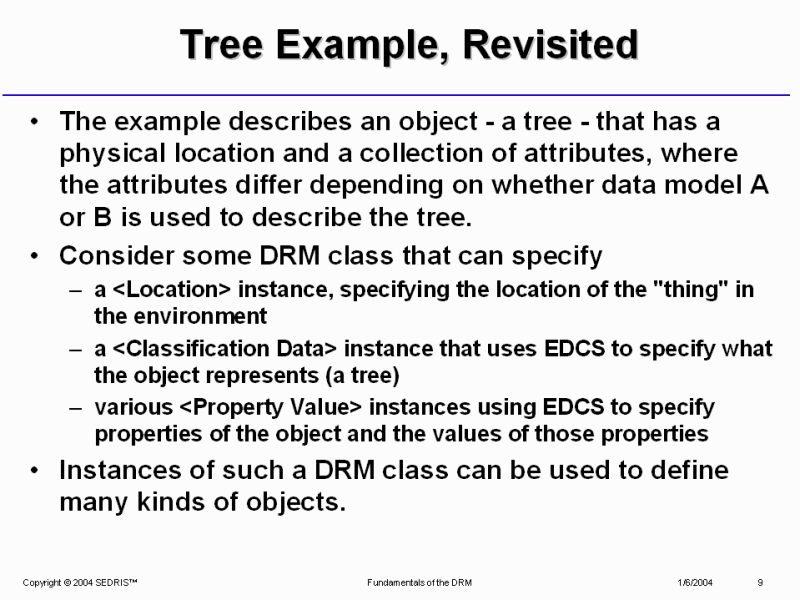
Tree Example, Revisited |
10
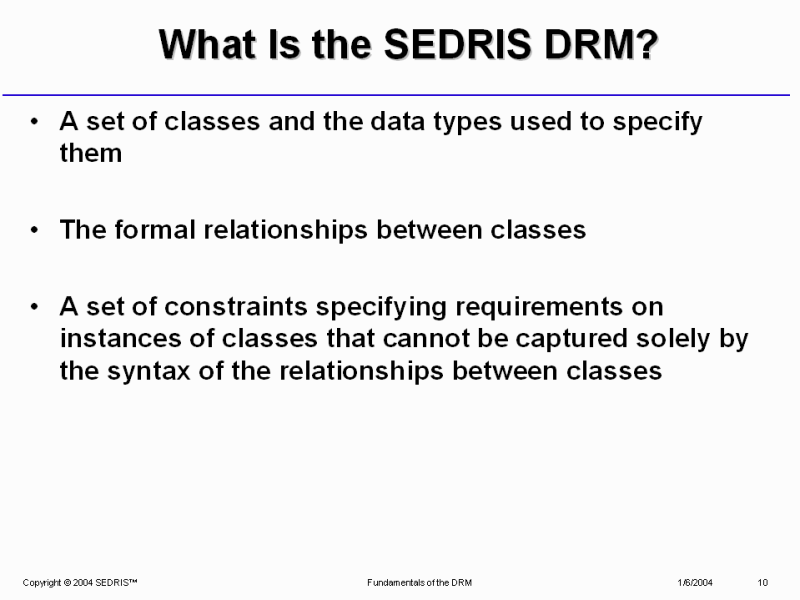
What Is the SEDRIS DRM? |
11
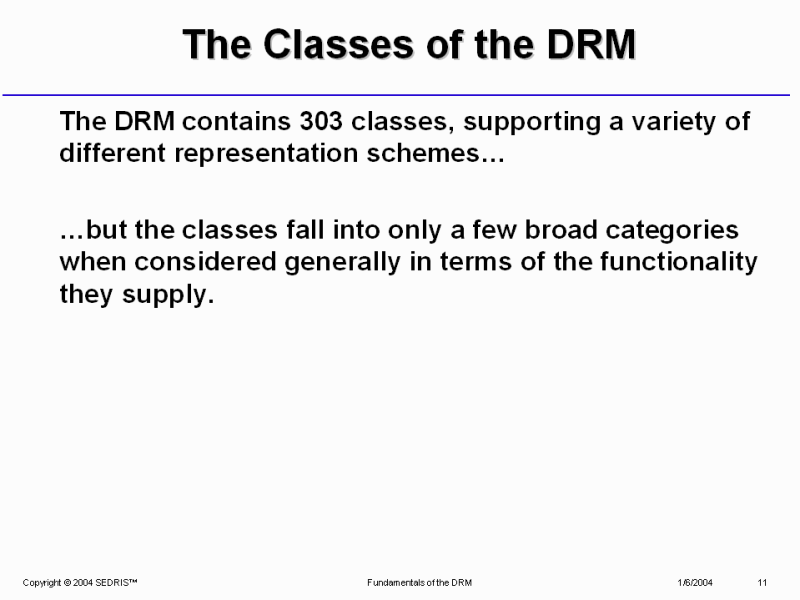
The Classes of the DRM |
12
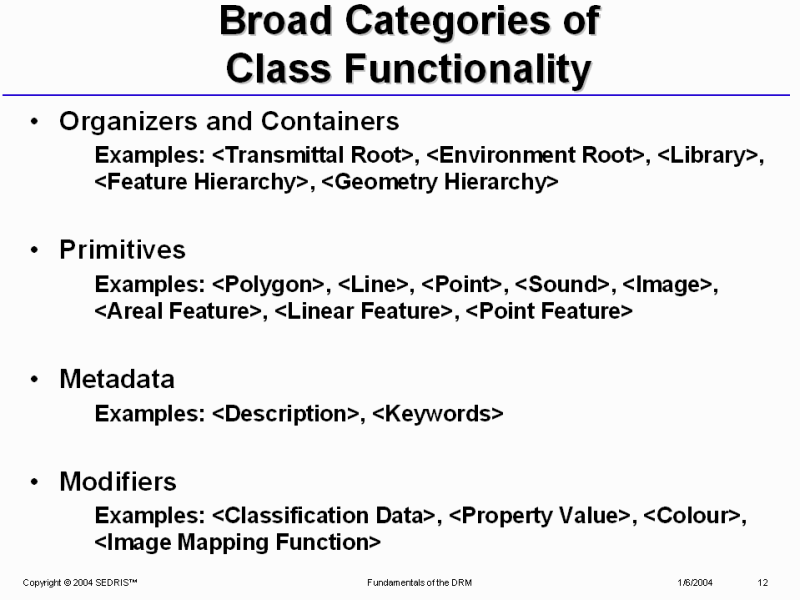
Broad Categories of
Class Functionality |
13
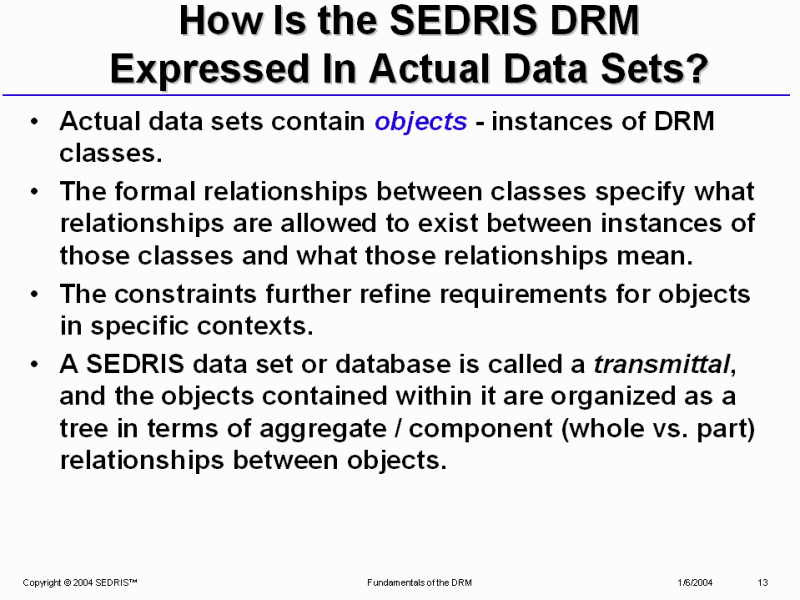
How Is the SEDRIS DRM Expressed In Actual Data Sets? |
14
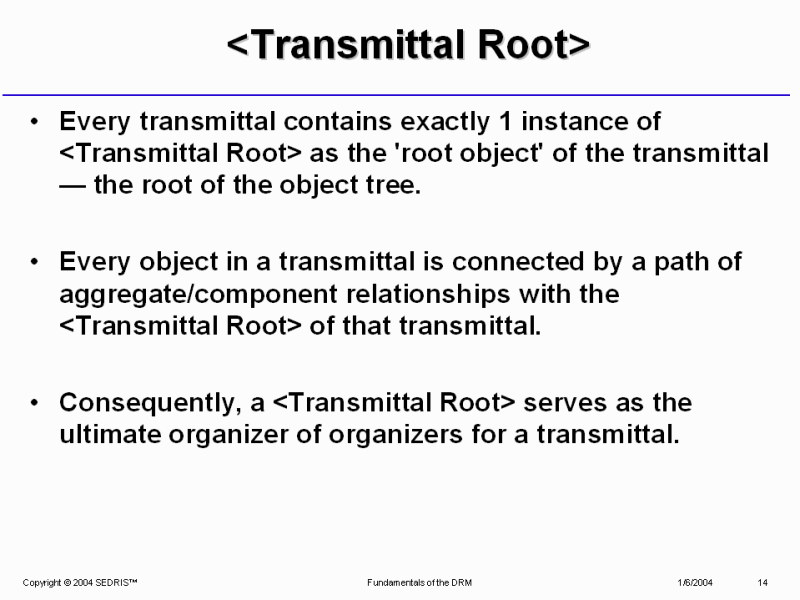
<Transmittal Root> |
15
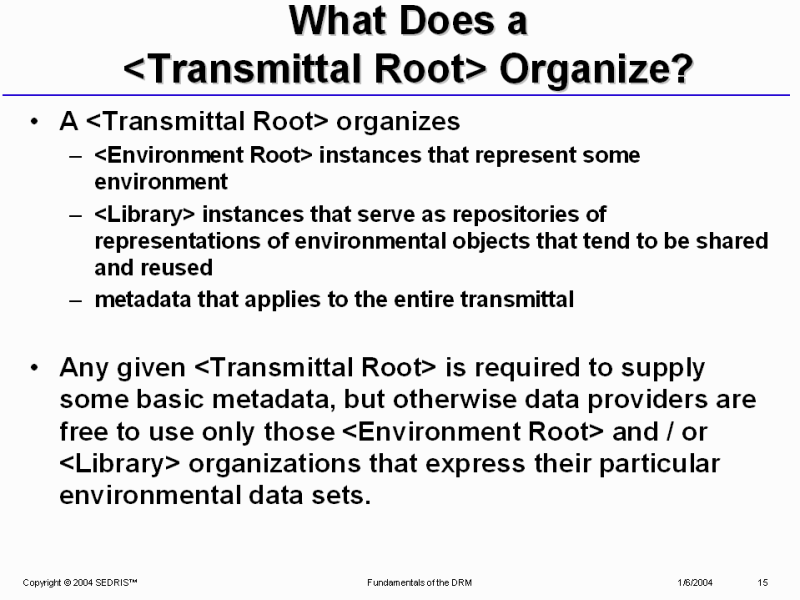
What Does a
<Transmittal Root> Organize? |
16
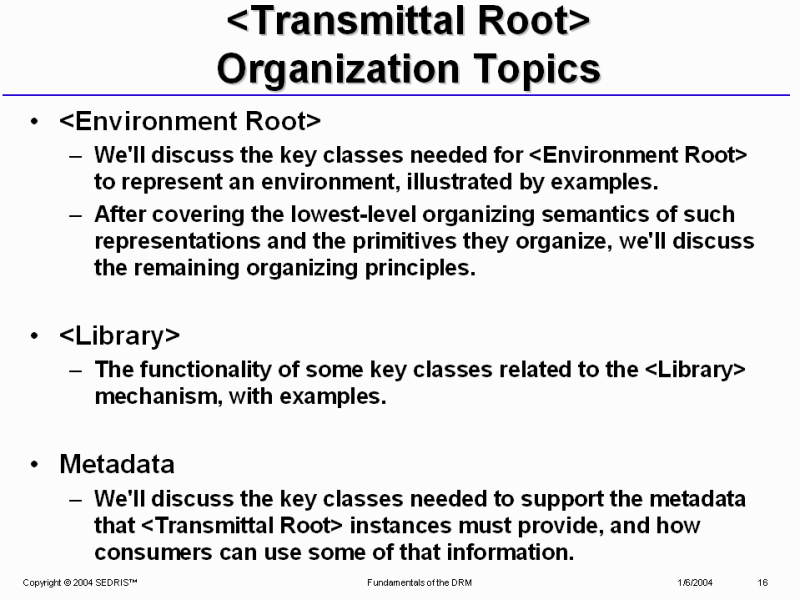
<Transmittal Root> Organization Topics |
17
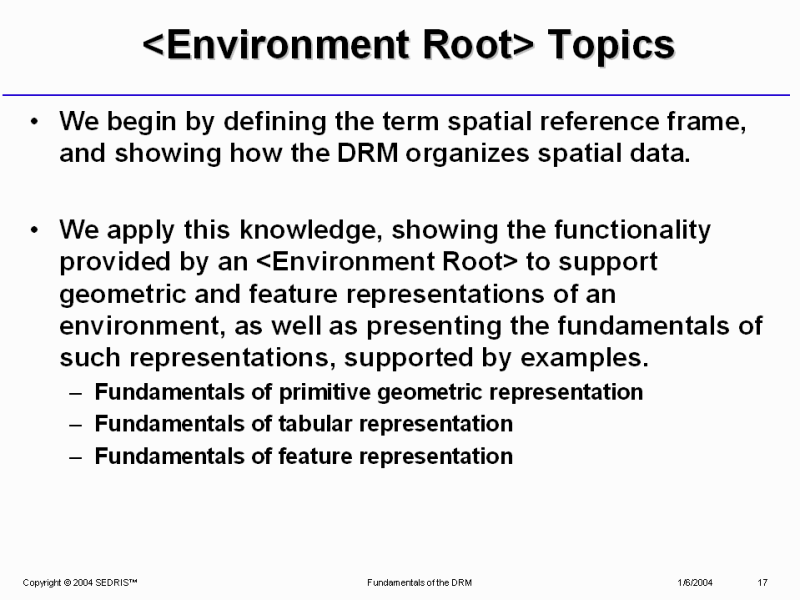
<Environment Root> Topics |
18
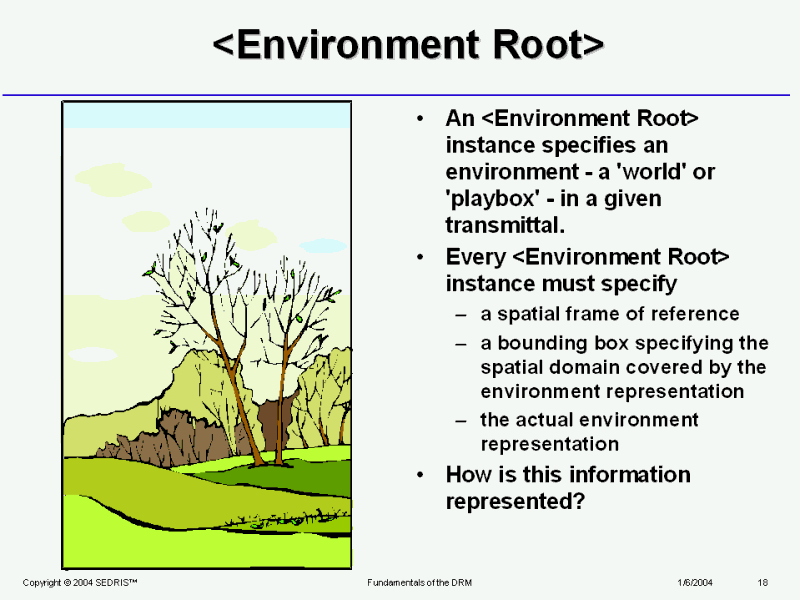
<Environment Root> |
19
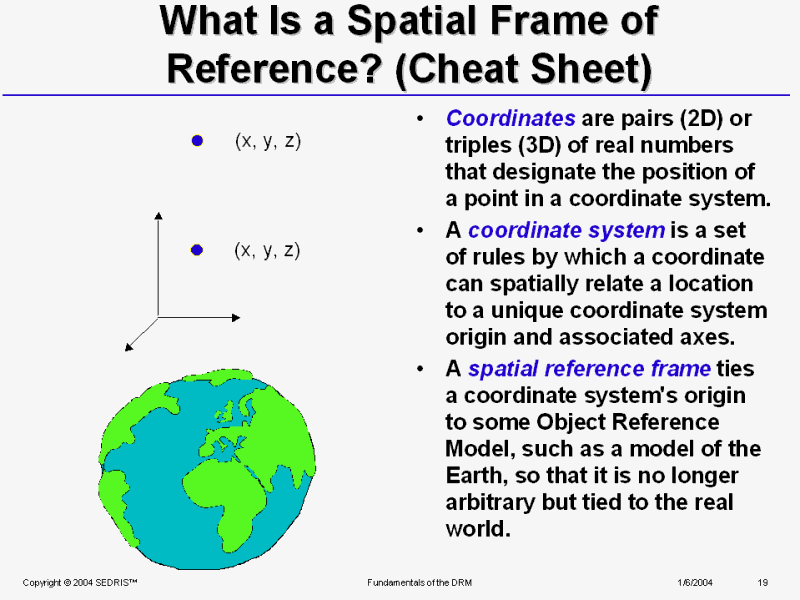
What Is a Spatial Frame of Reference? (Cheat Sheet) |
20
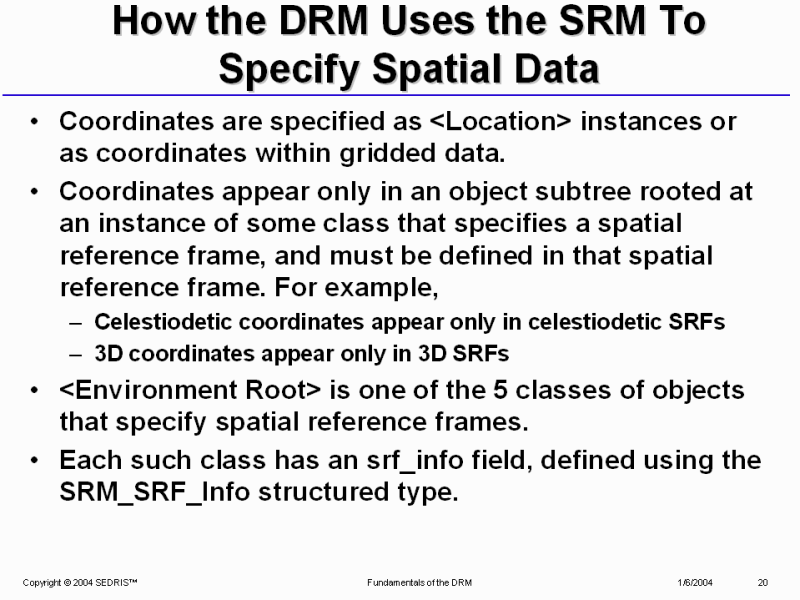
How the DRM Uses the SRM To Specify Spatial Data |
21

<Environment Root> Topics |
22
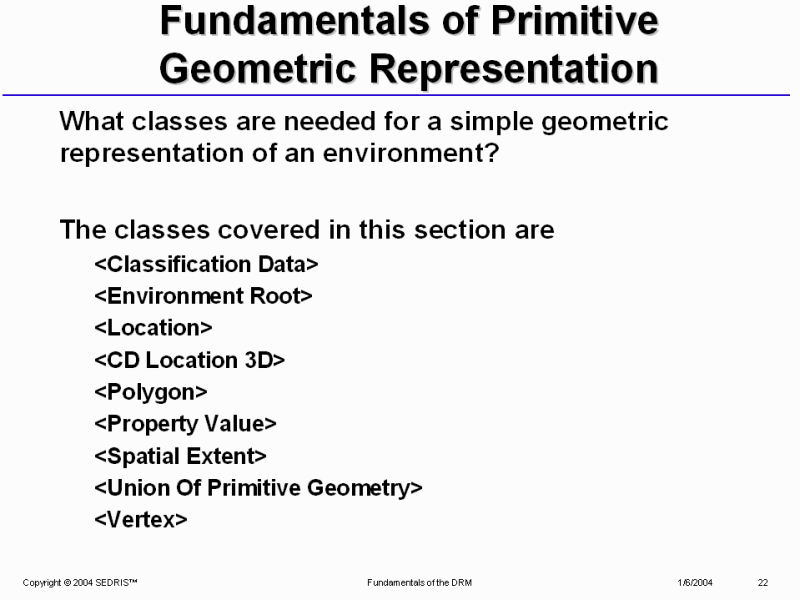
Fundamentals of Primitive Geometric Representation |
23
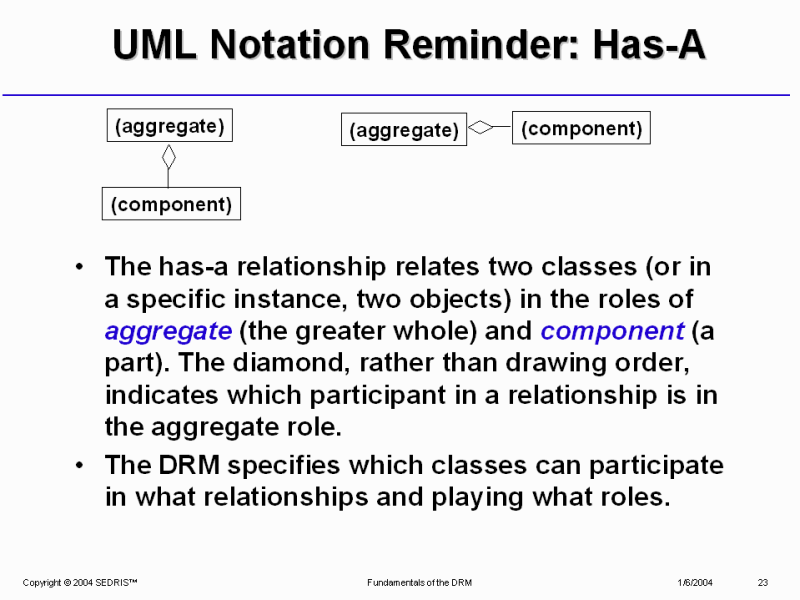
UML Notation Reminder: Has-A |
24
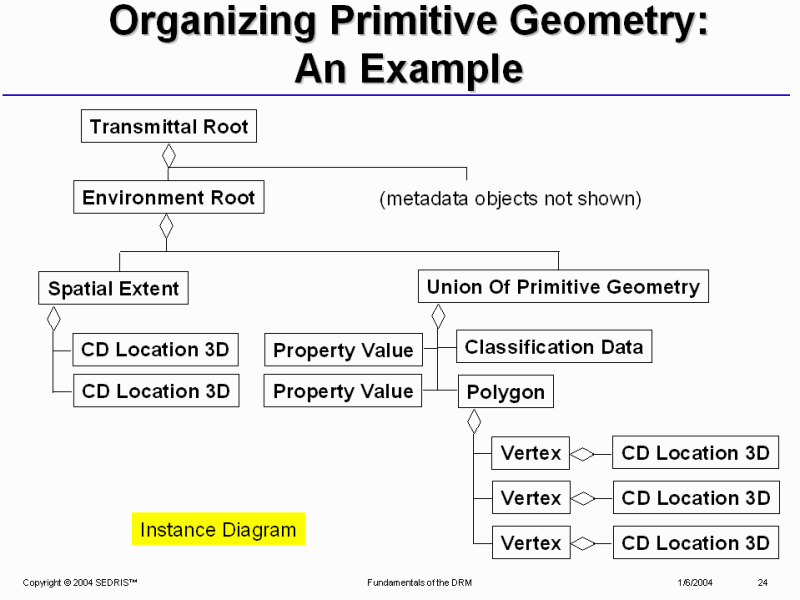
Organizing Primitive Geometry:
An Example |
25
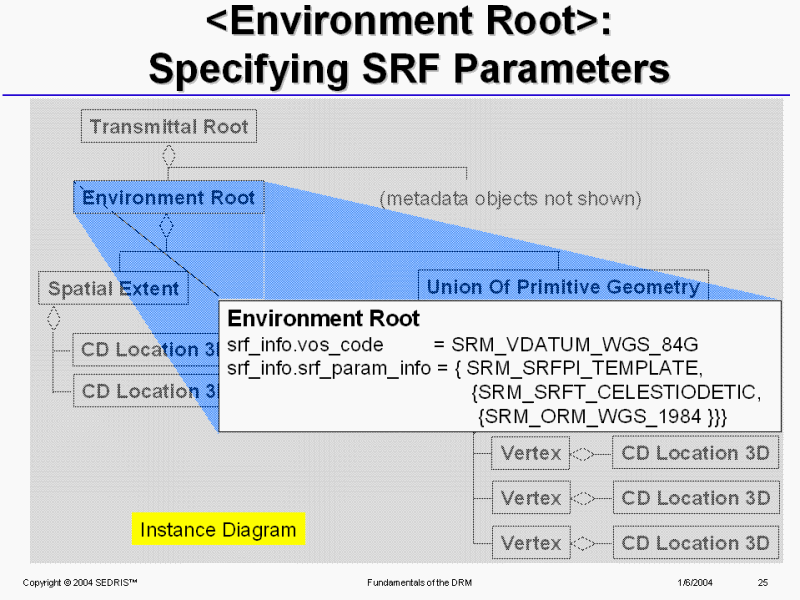
<Environment Root>: Specifying SRF Parameters |
26
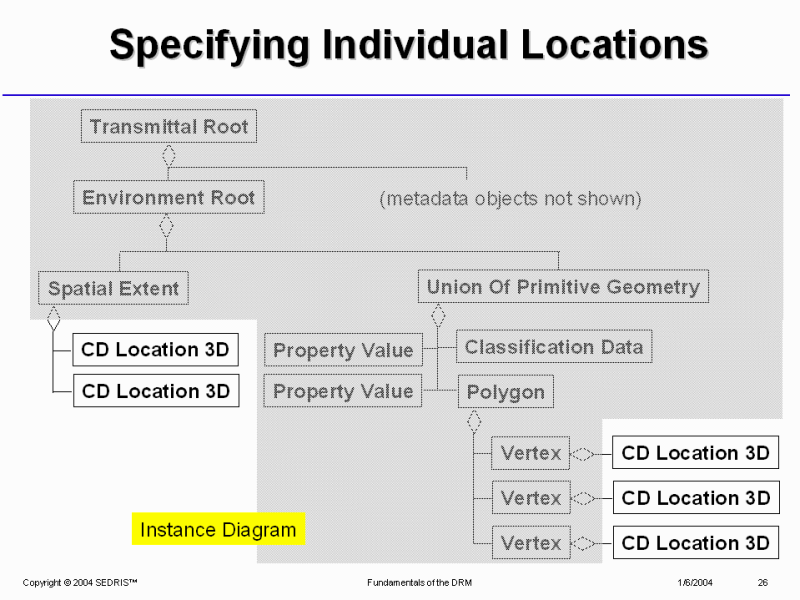
Specifying Individual Locations |
27
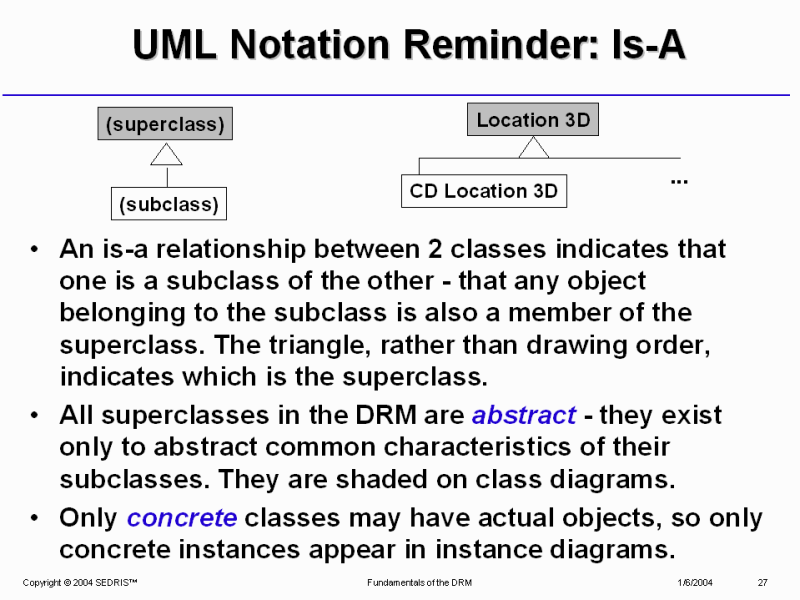
UML Notation Reminder: Is-A |
28
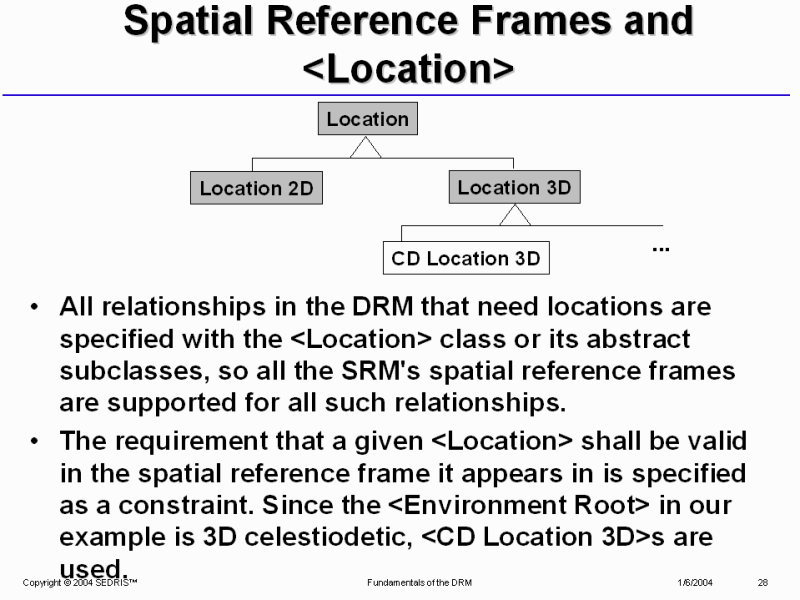
Spatial Reference Frames and <Location> |
29

<Spatial Extent>:
Specifying a Bounding Box |
30
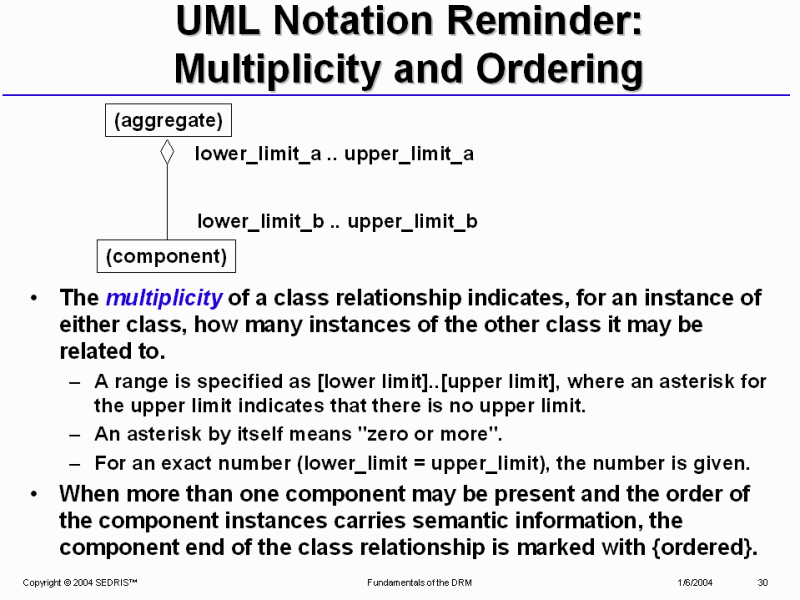
UML Notation Reminder: Multiplicity and Ordering |
31
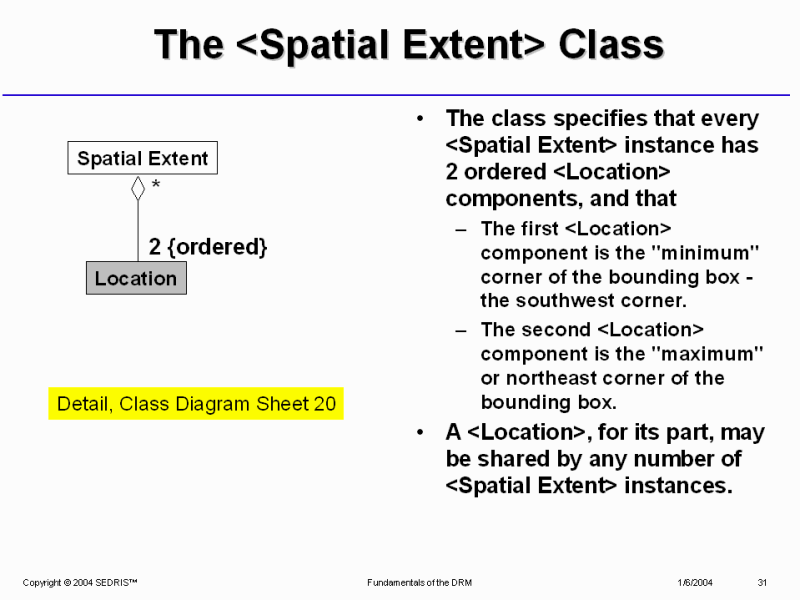
The <Spatial Extent> Class |
32
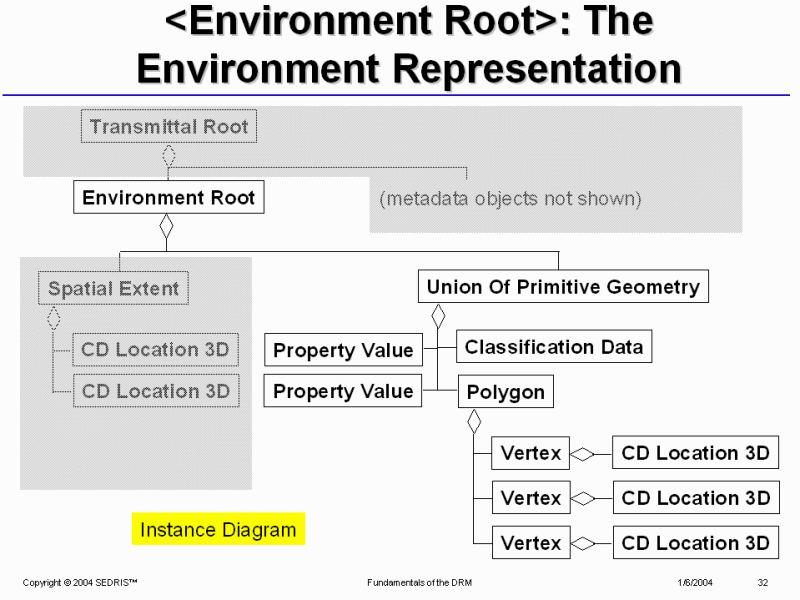
<Environment Root>: The Environment Representation |
33
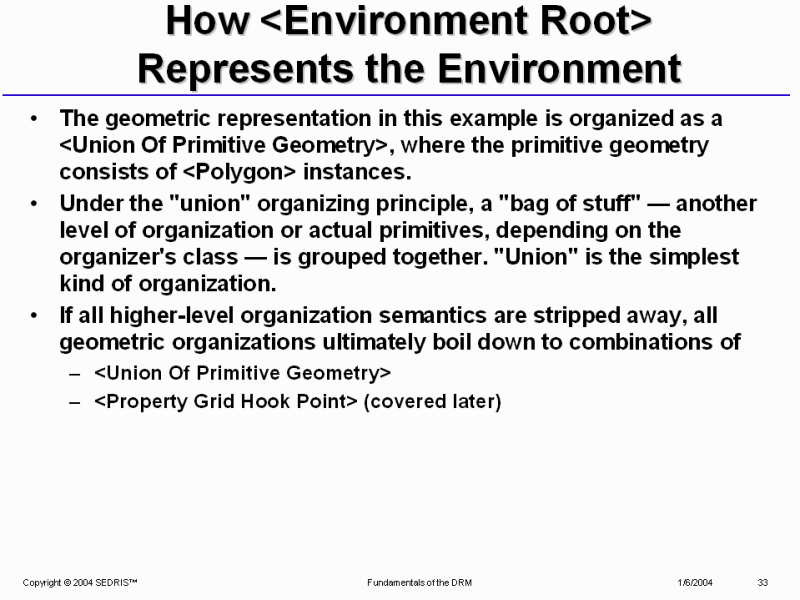
How <Environment Root> Represents the Environment |
34
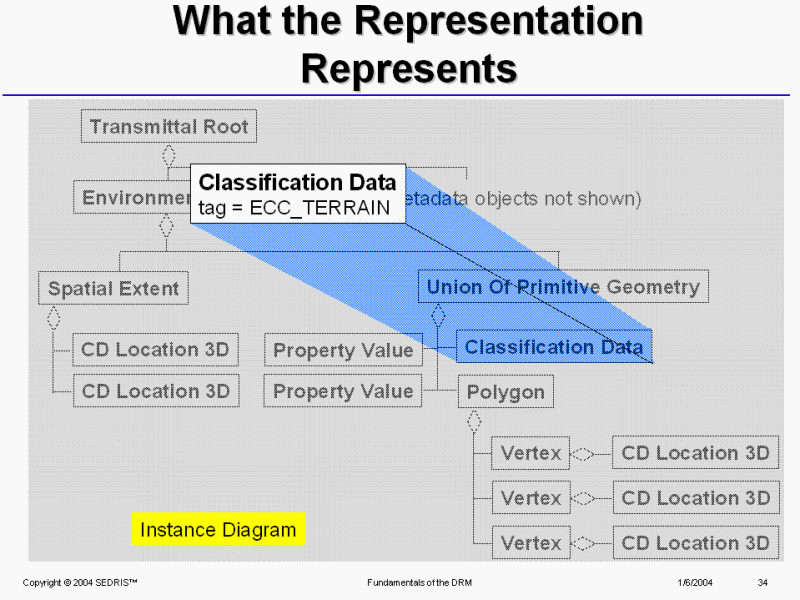
What the Representation Represents |
35
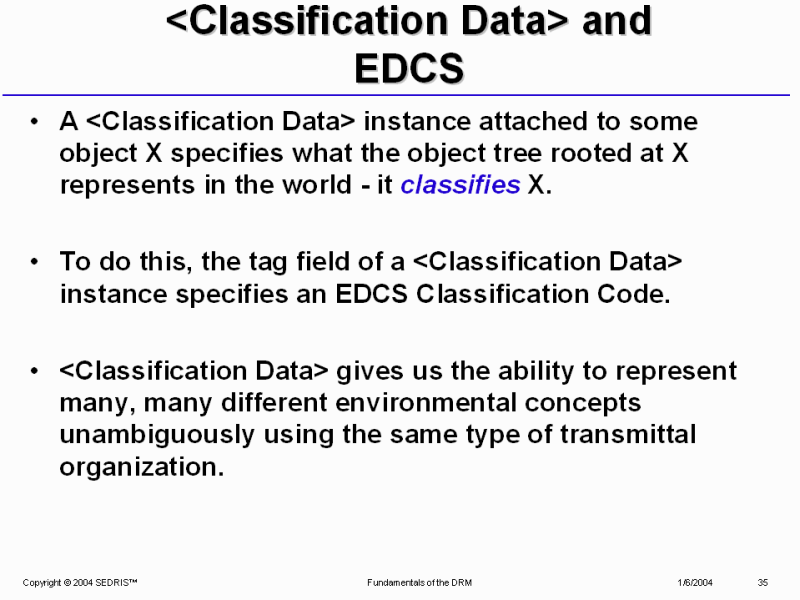
<Classification Data> and EDCS |
36
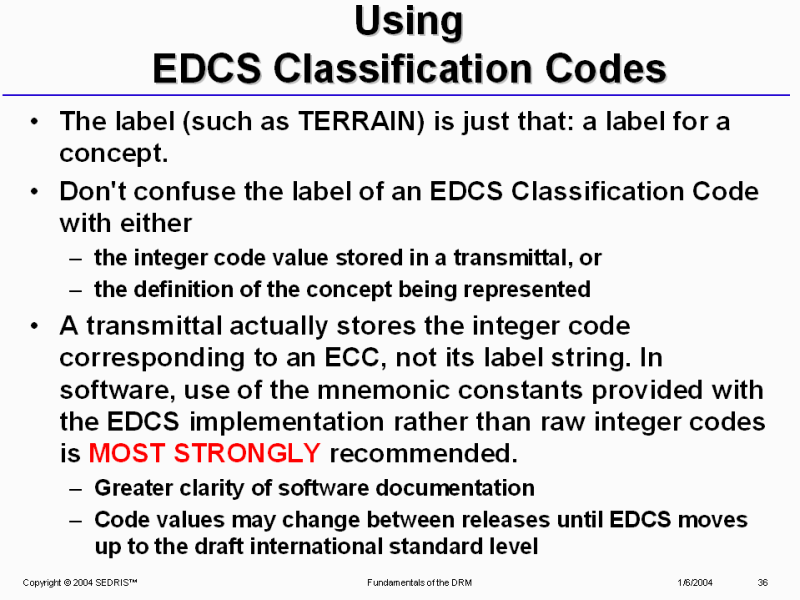
Using
EDCS Classification Codes |
37
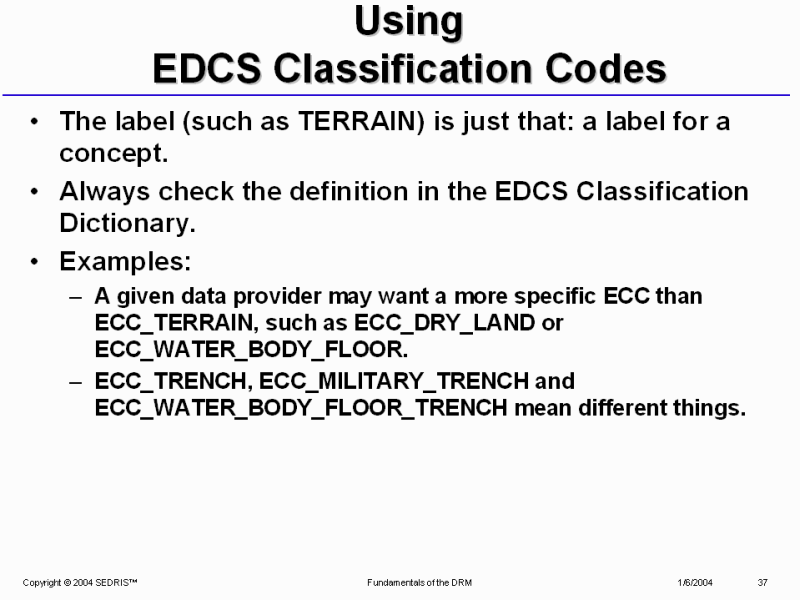
Using
EDCS Classification Codes |
38
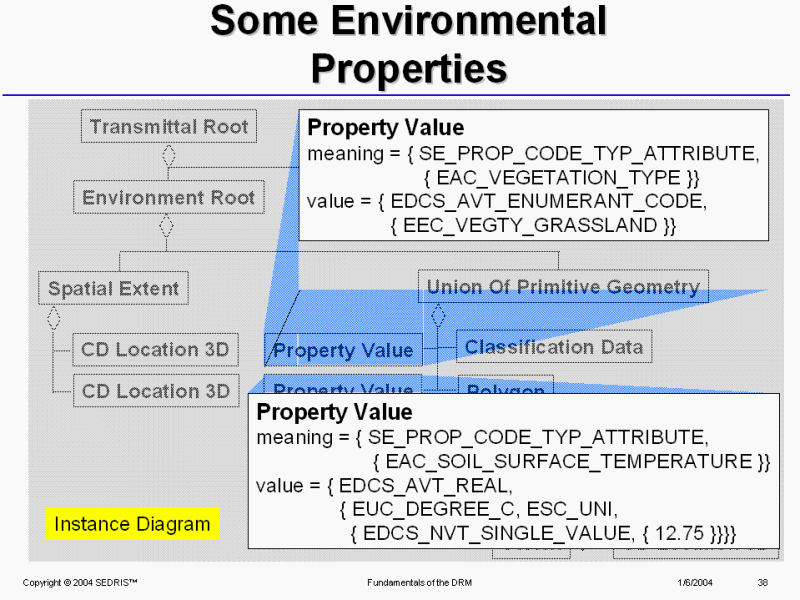
Some Environmental Properties |
39
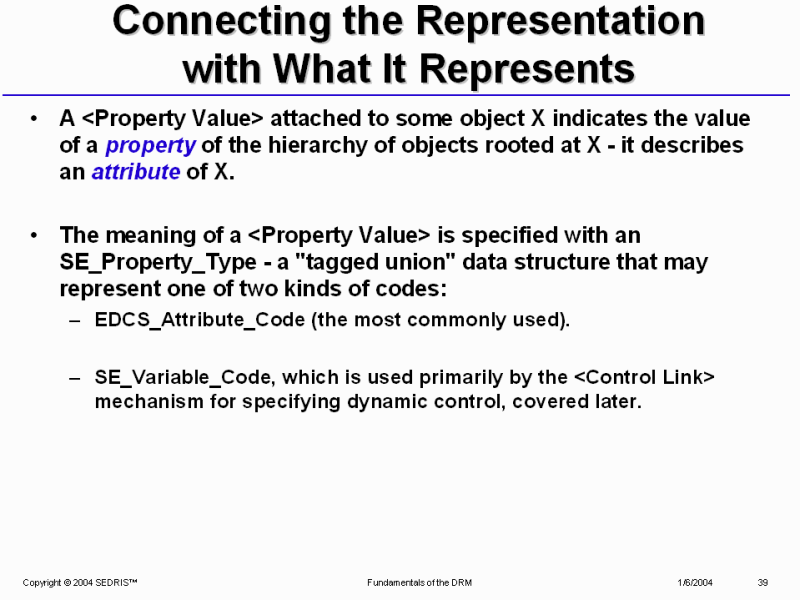
Connecting the Representation with What It Represents |
40
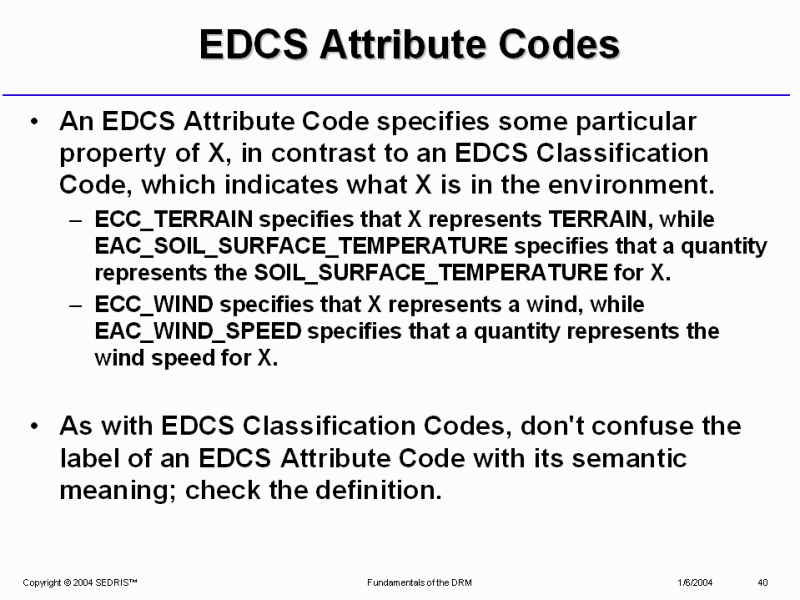
EDCS Attribute Codes |
41
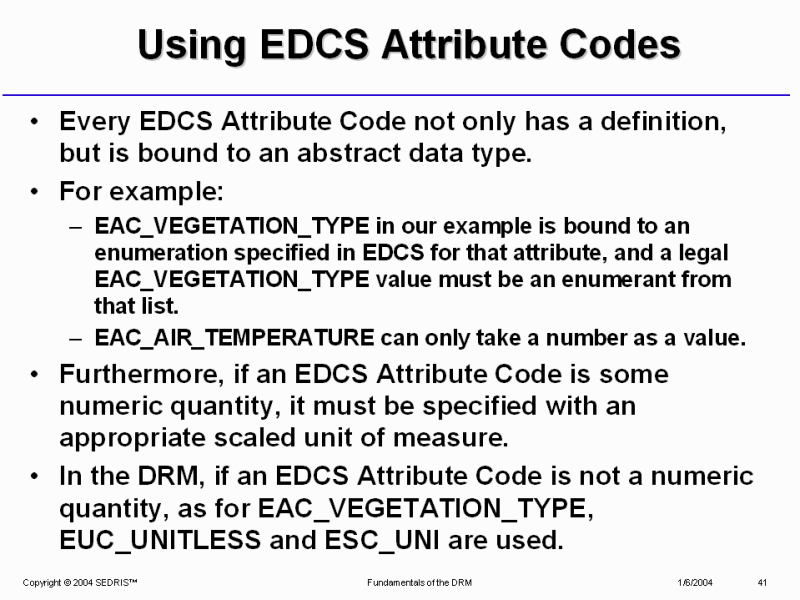
Using EDCS Attribute Codes |
42
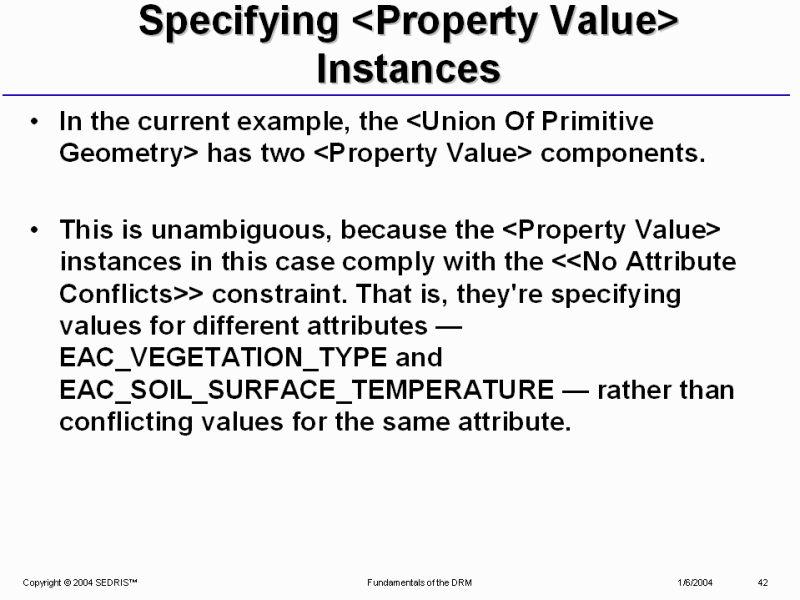
Specifying <Property Value> Instances |
43
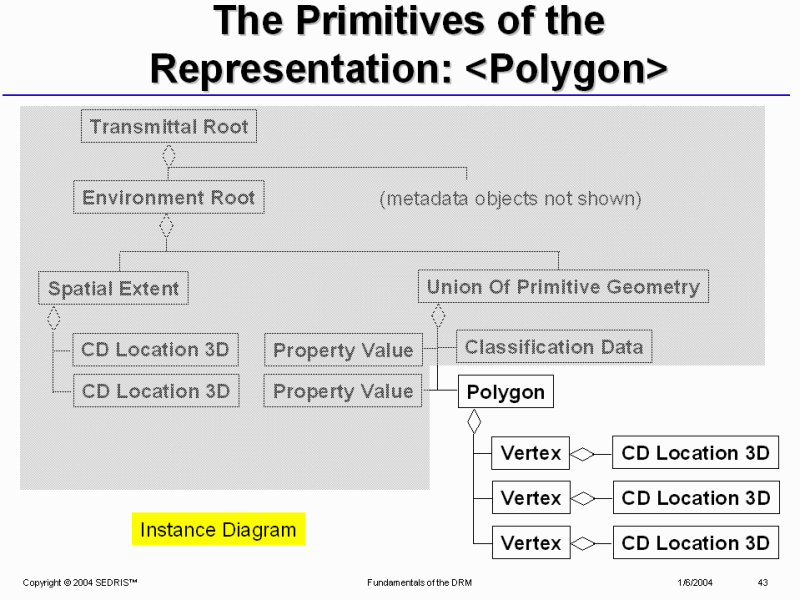
The Primitives of the Representation: <Polygon> |
44
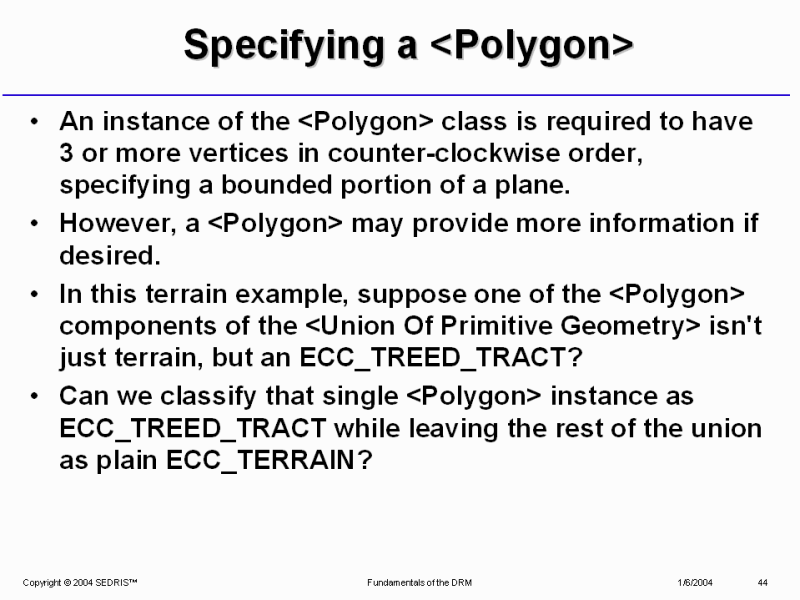
Specifying a <Polygon> |
45
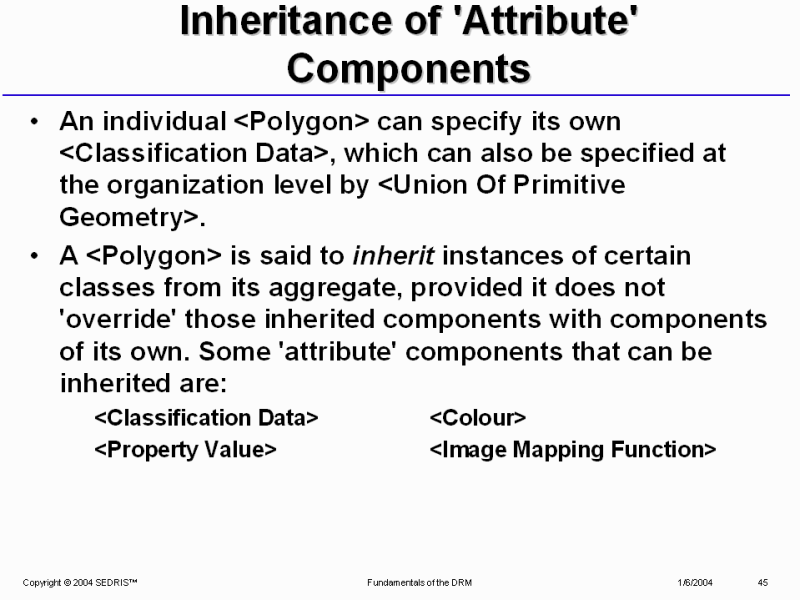
Inheritance of 'Attribute' Components |
46
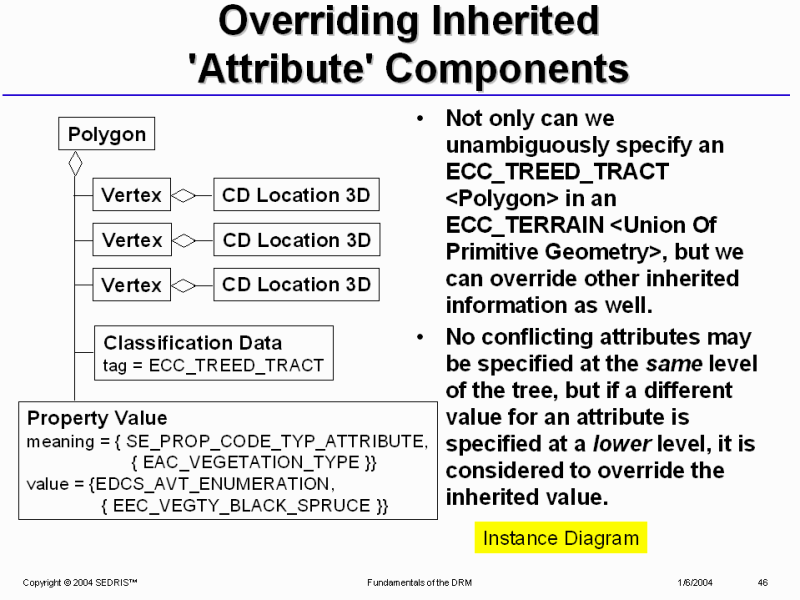
Overriding Inherited
'Attribute' Components |
47
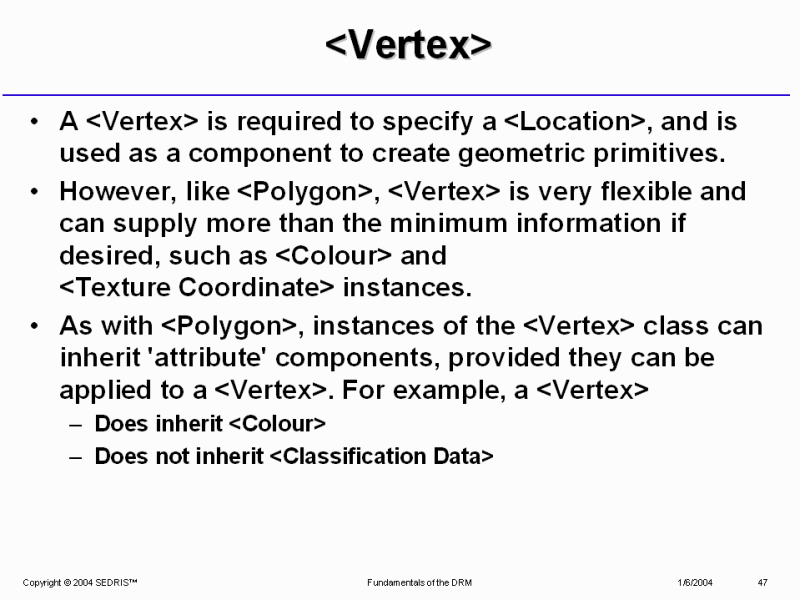
<Vertex> |
48
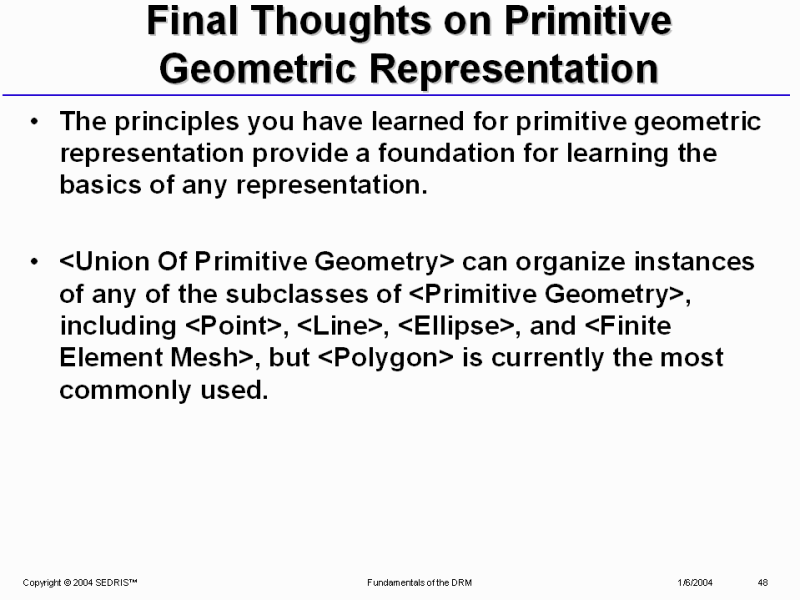
Final Thoughts on Primitive Geometric Representation |
49
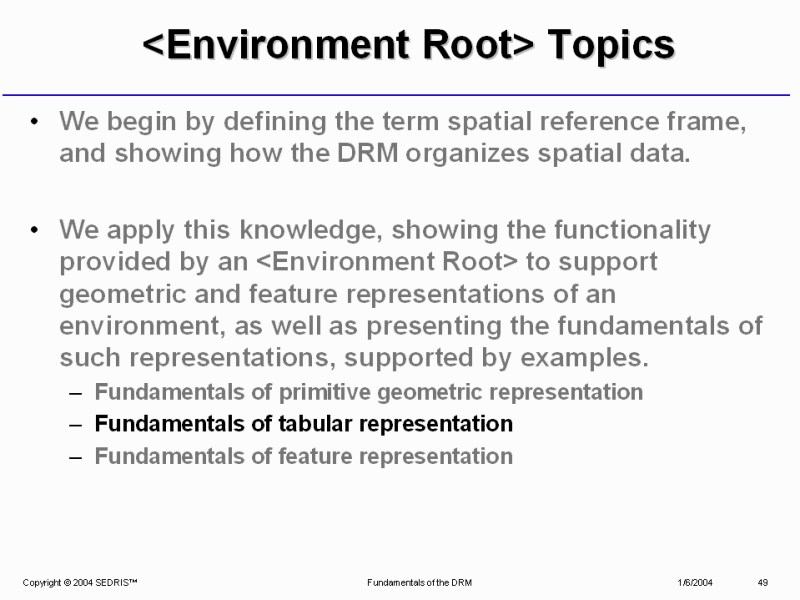
<Environment Root> Topics |
50
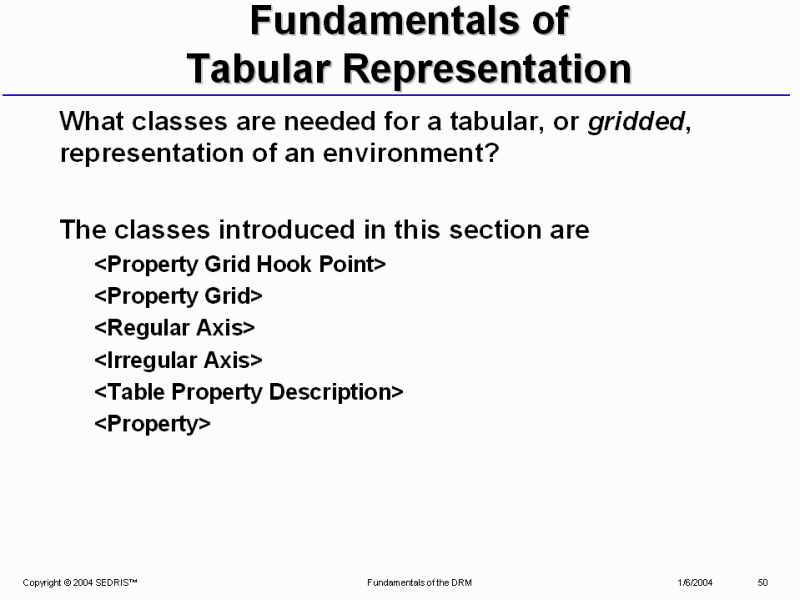
Fundamentals of
Tabular Representation |
51
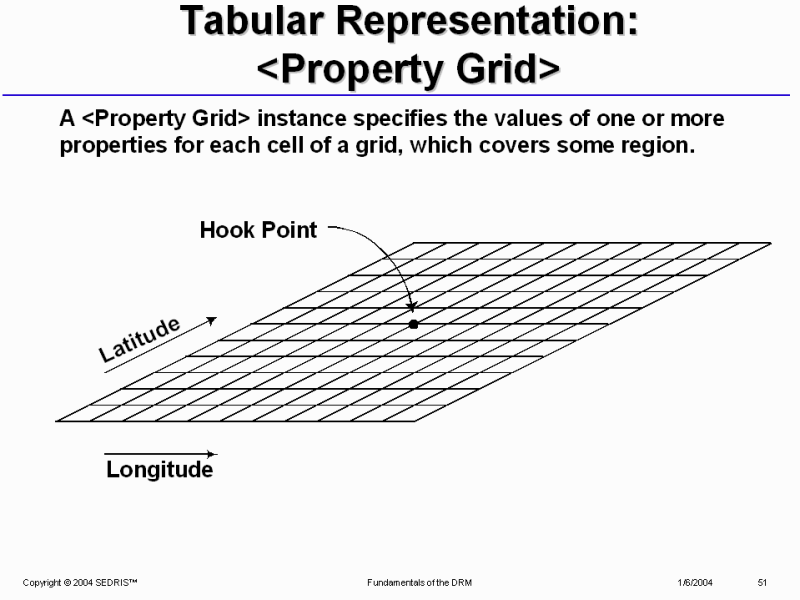
Tabular Representation: <Property Grid> |
52
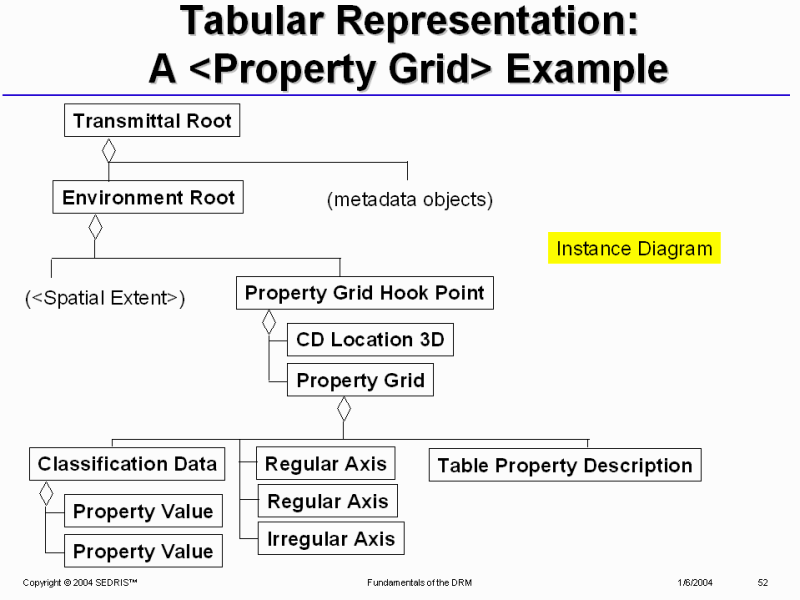
Tabular Representation:
A <Property Grid> Example |
53
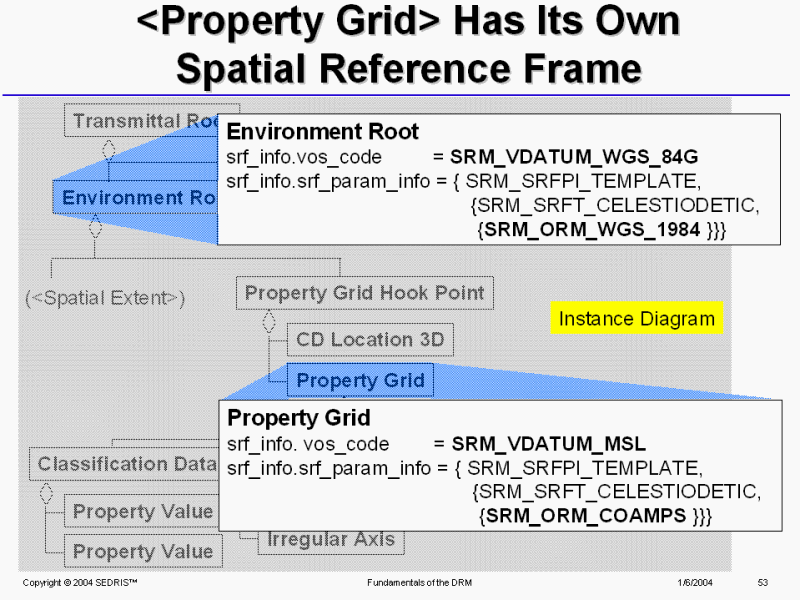
<Property Grid> Has Its Own Spatial Reference Frame |
54
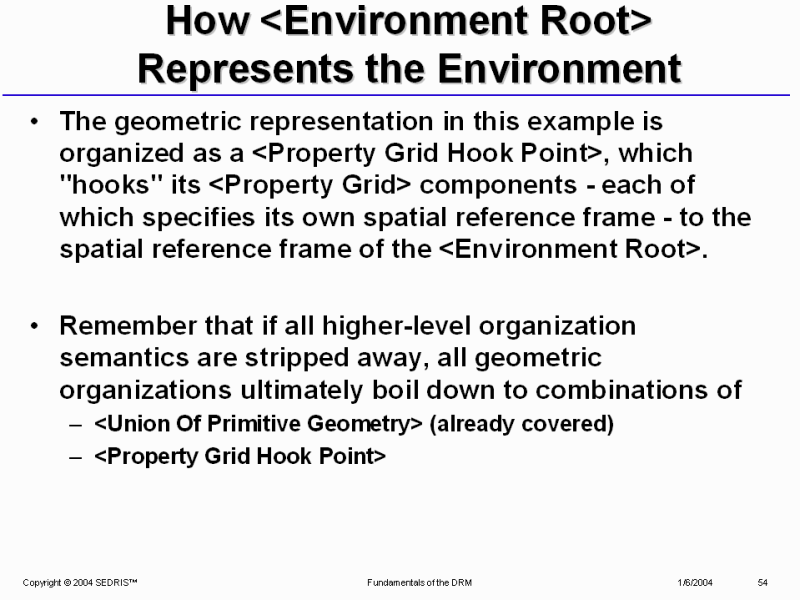
How <Environment Root> Represents the Environment |
55
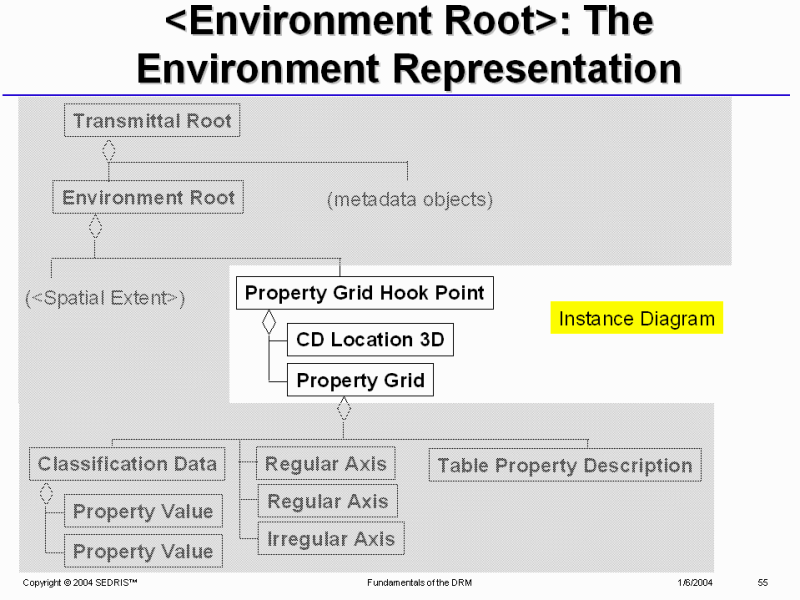
<Environment Root>: The Environment Representation |
56
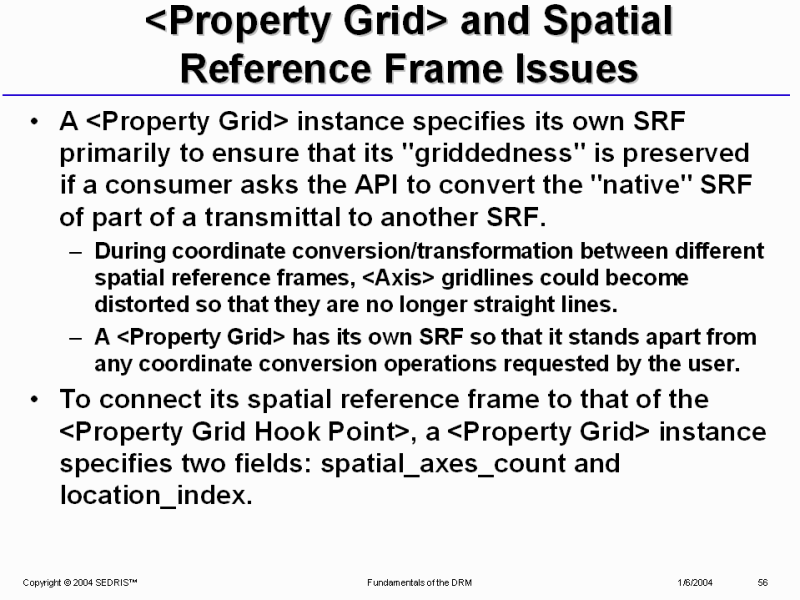
<Property Grid> and Spatial Reference Frame Issues |
57
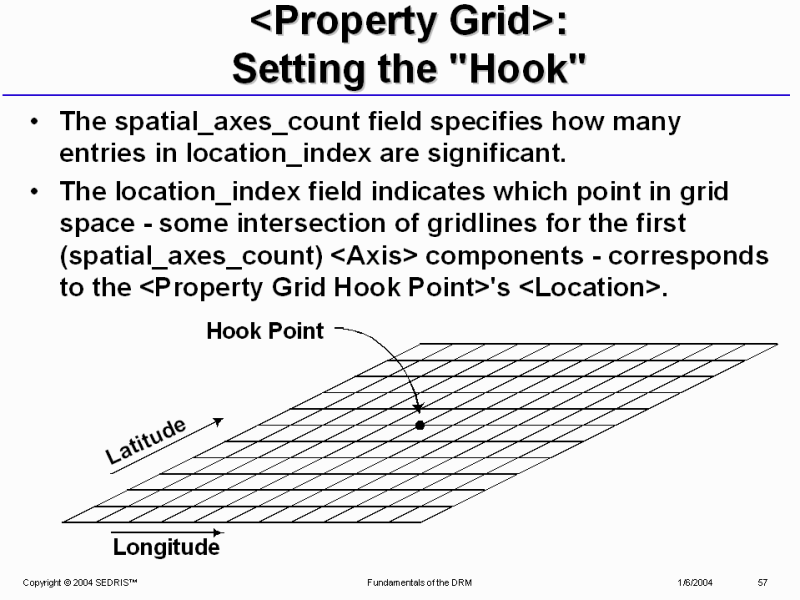
<Property Grid>:
Setting the "Hook" |
58
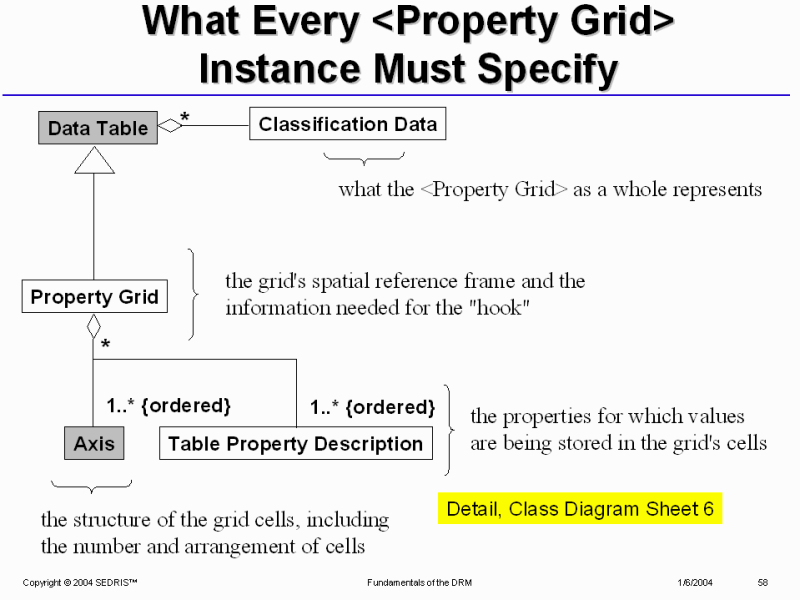
What Every <Property Grid> Instance Must Specify |
59
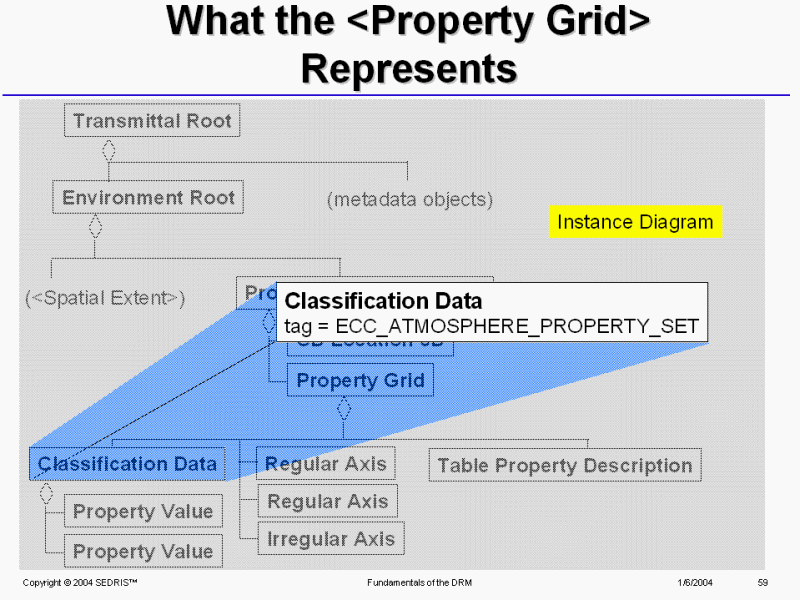
What the <Property Grid> Represents |
60

When <Classification Data> Needs Further Qualification |
61
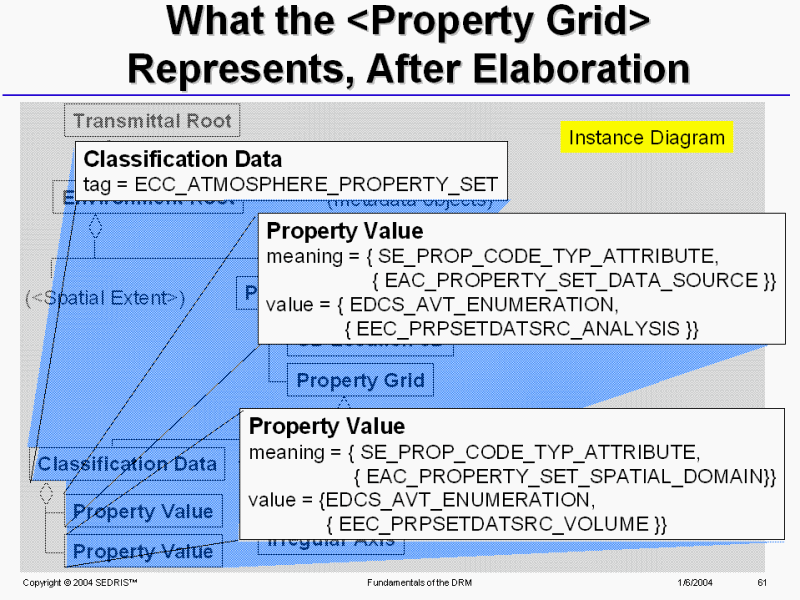
What the <Property Grid> Represents, After Elaboration |
62
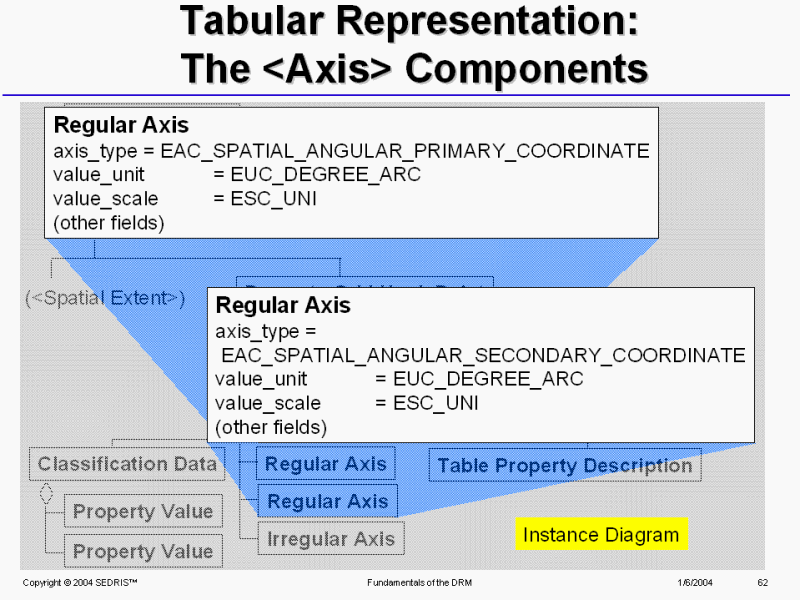
Tabular Representation:
The <Axis> Components |
63
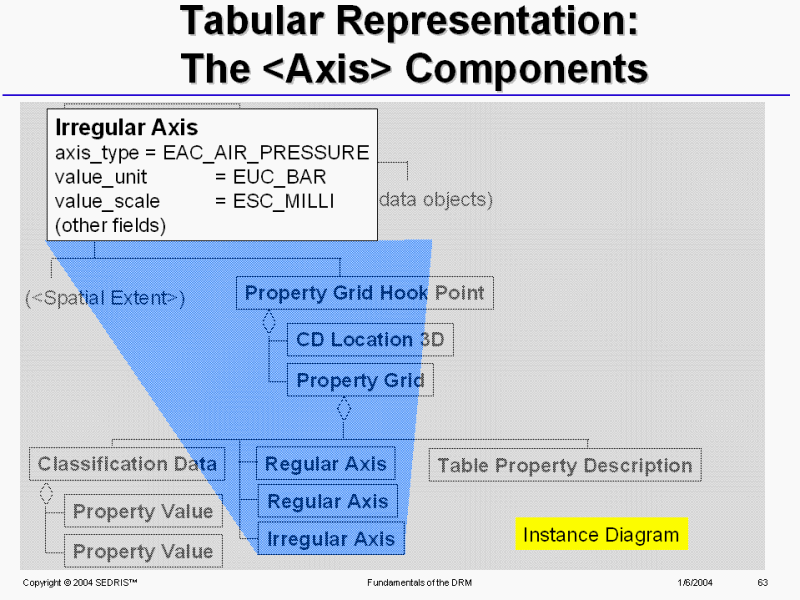
Tabular Representation:
The <Axis> Components |
64
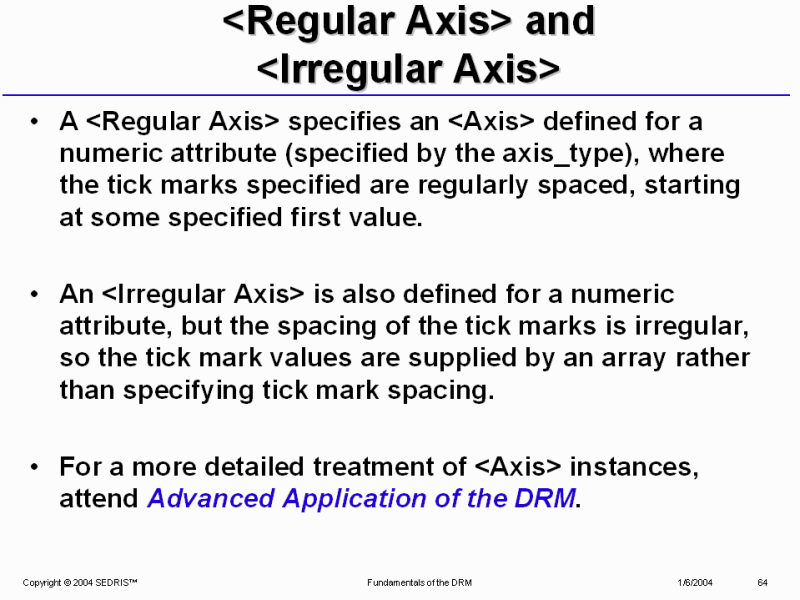
<Regular Axis> and
<Irregular Axis> |
65
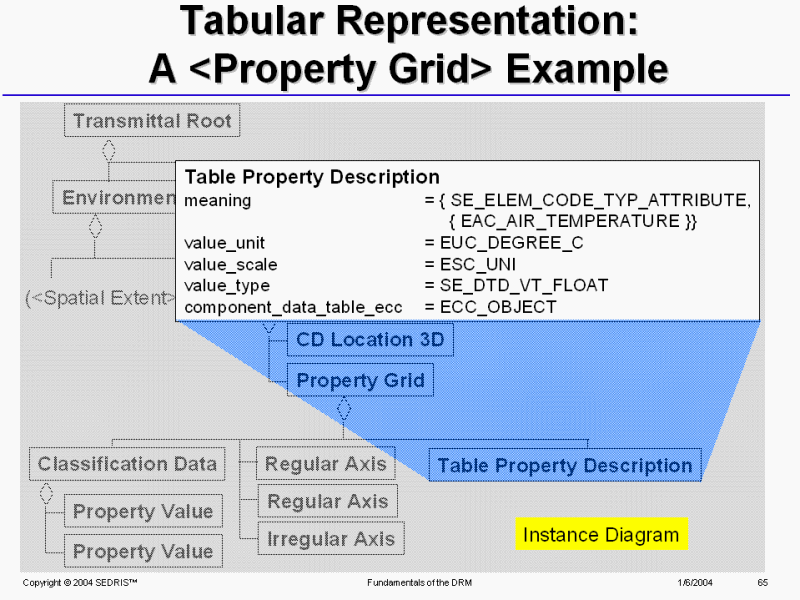
Tabular Representation:
A <Property Grid> Example |
66
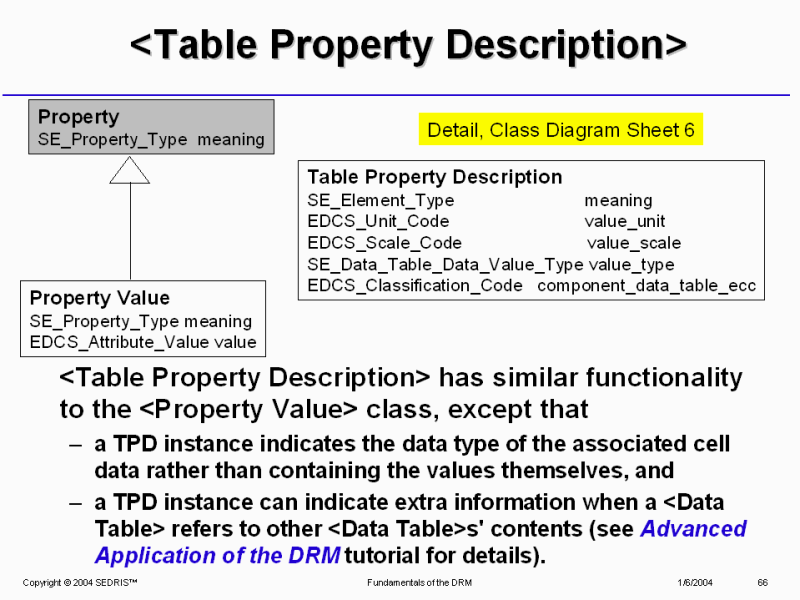
<Table Property Description> |
67
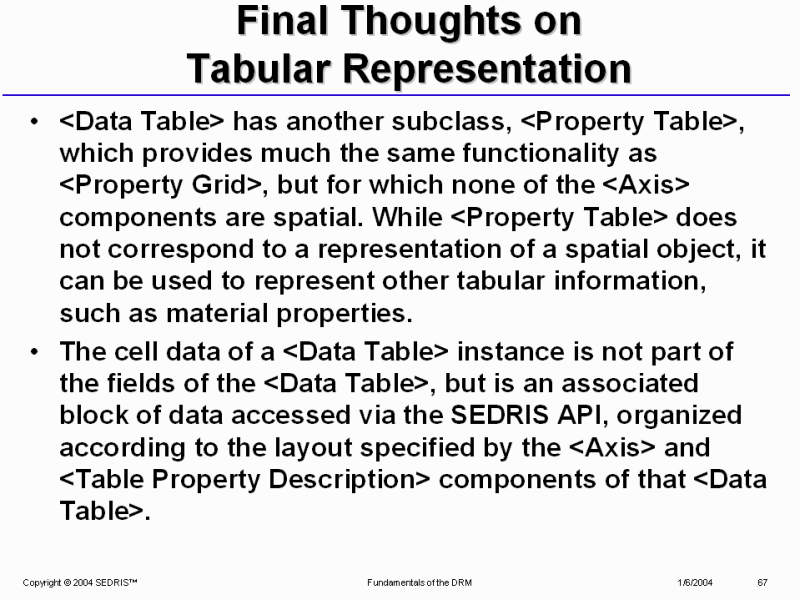
Final Thoughts on
Tabular Representation |
68
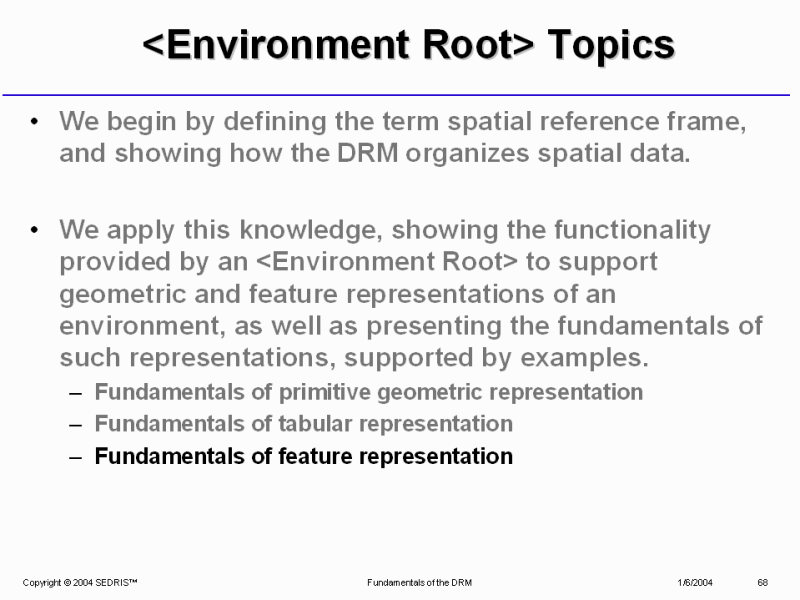
<Environment Root> Topics |
69
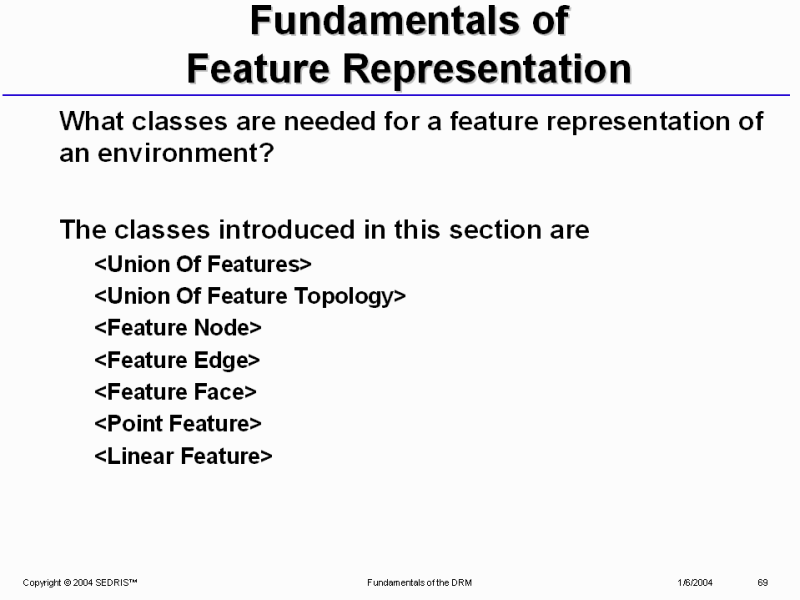
Fundamentals of
Feature Representation |
70
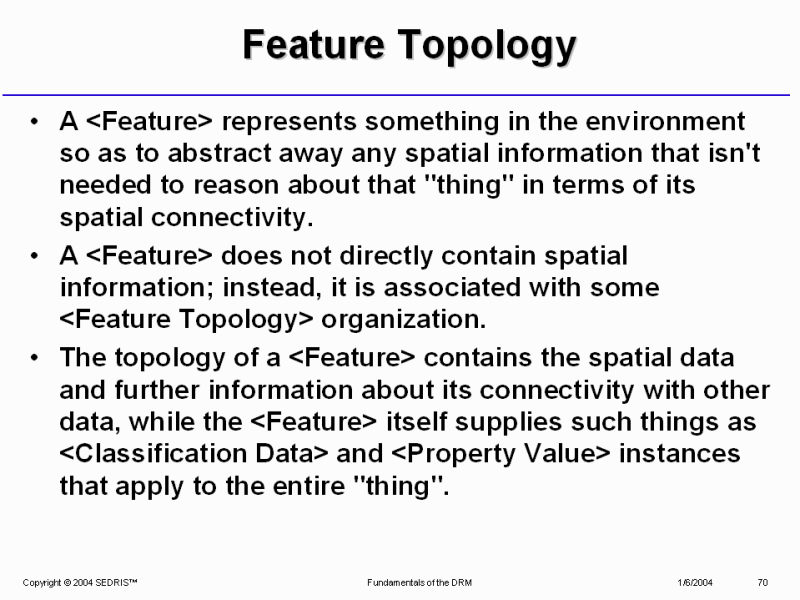
Feature Topology |
71
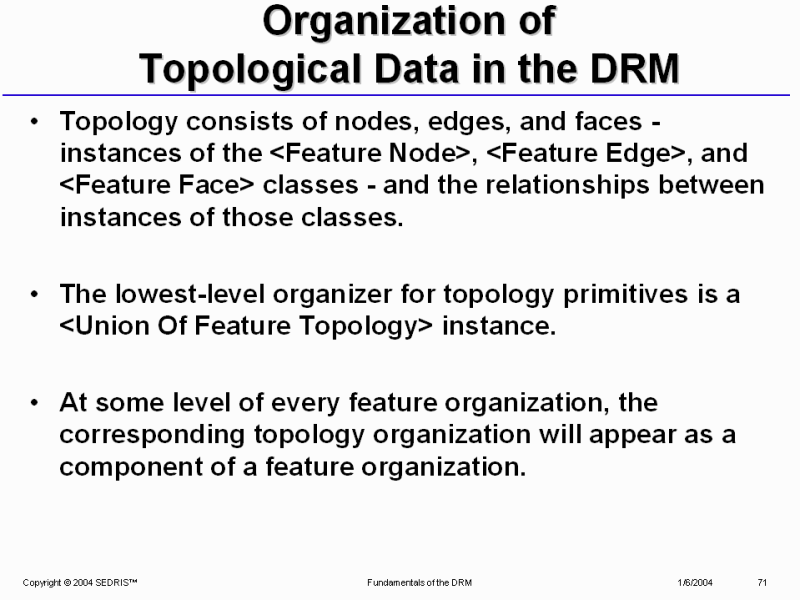
Organization of
Topological Data in the DRM |
72
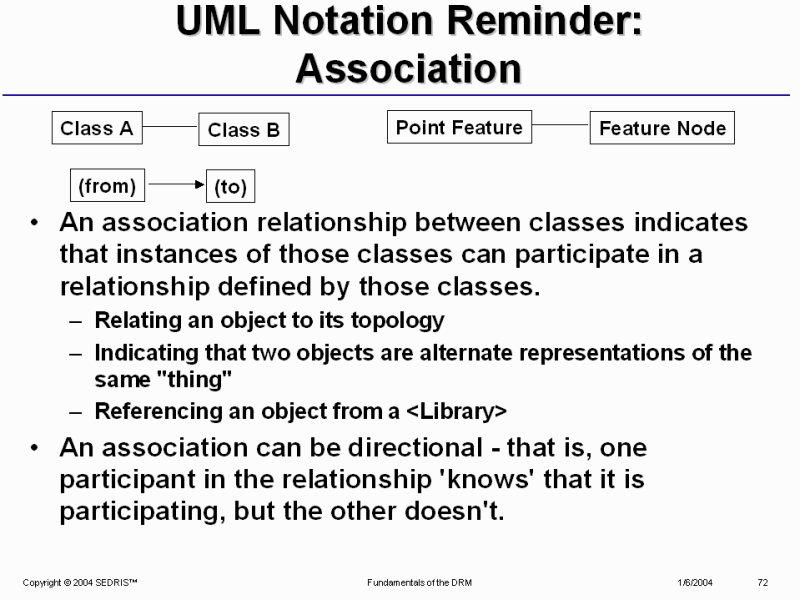
UML Notation Reminder: Association |
73
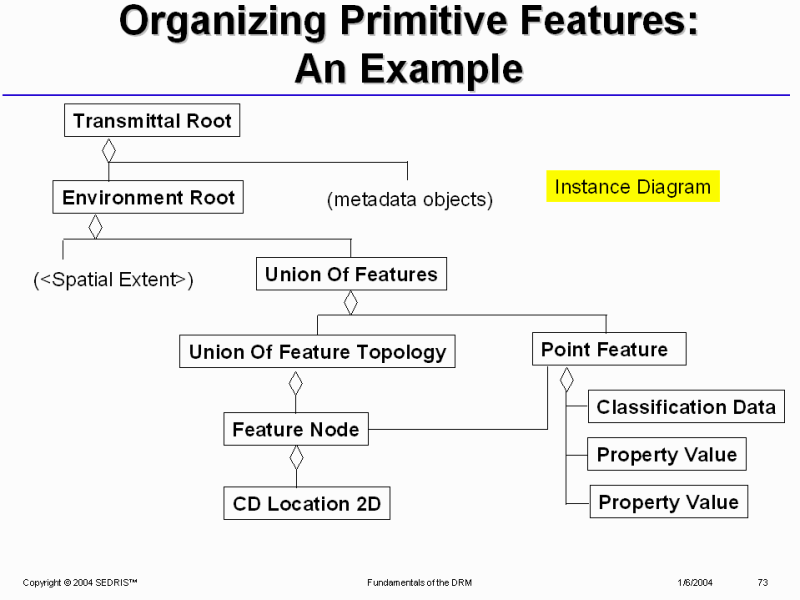
Organizing Primitive Features:
An Example |
74
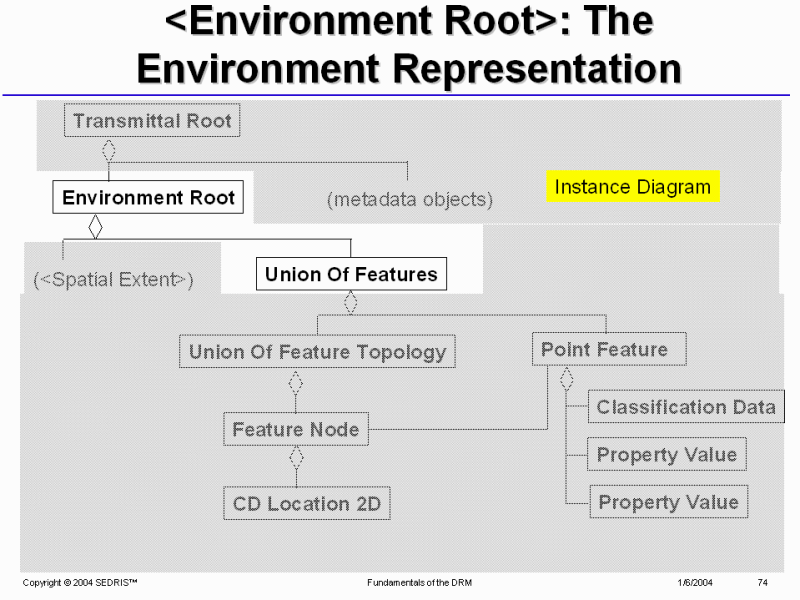
<Environment Root>: The Environment Representation |
75
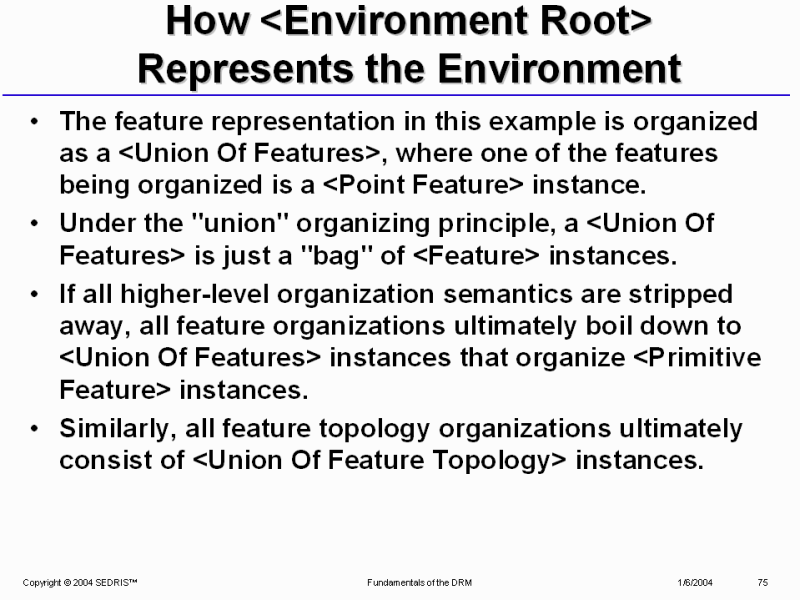
How <Environment Root> Represents the Environment |
76
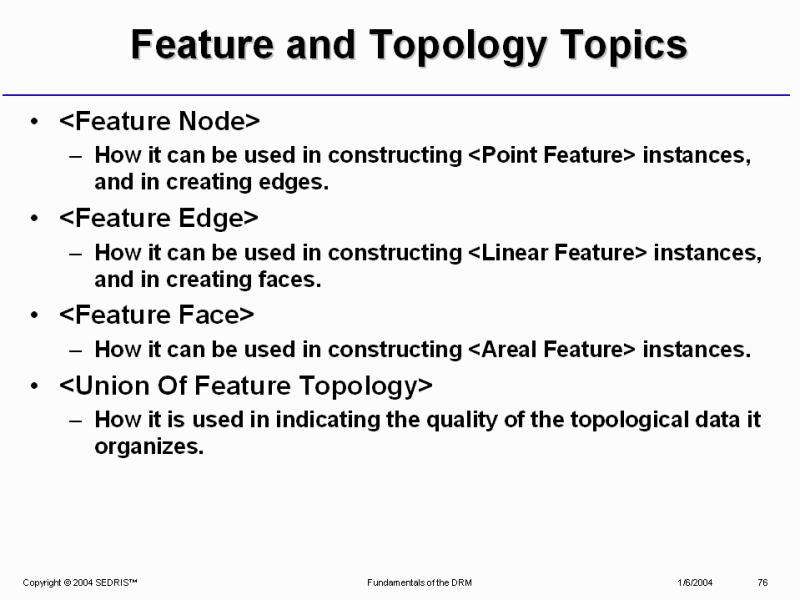
Feature and Topology Topics |
77
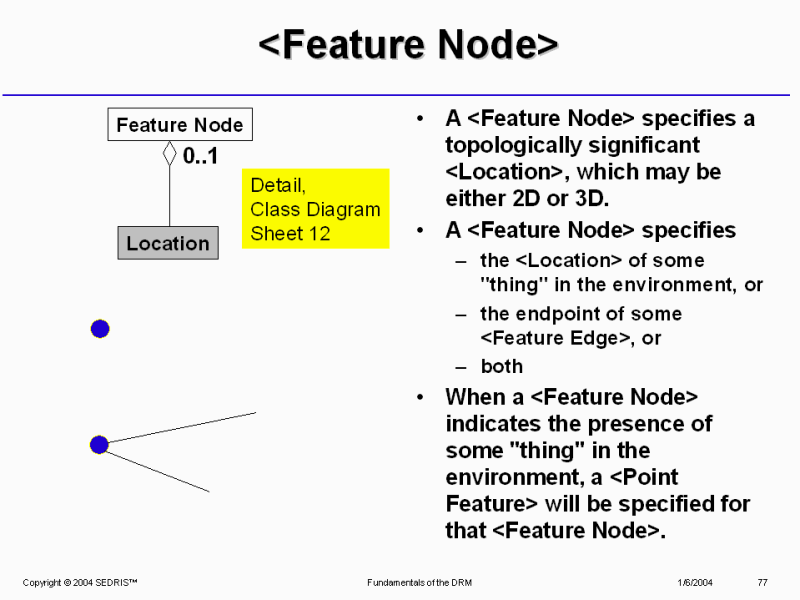
<Feature Node> |
78
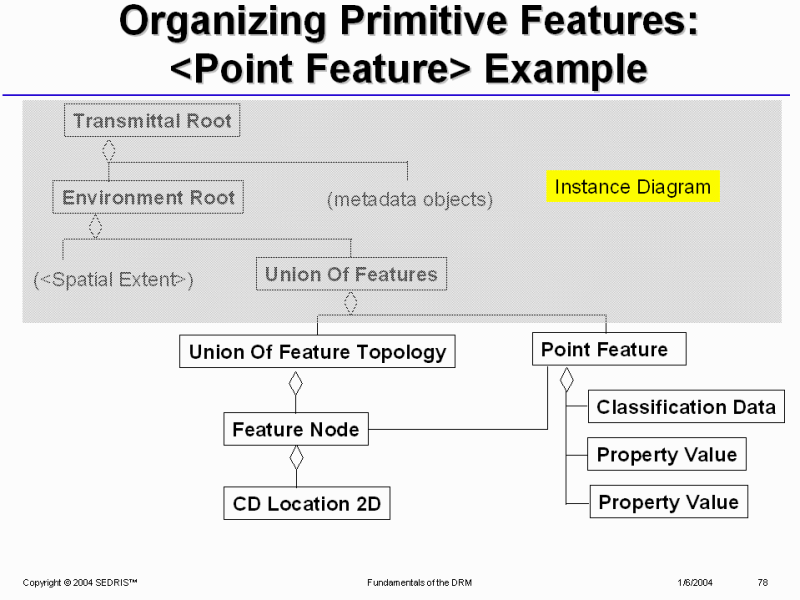
Organizing Primitive Features:
<Point Feature> Example |
79
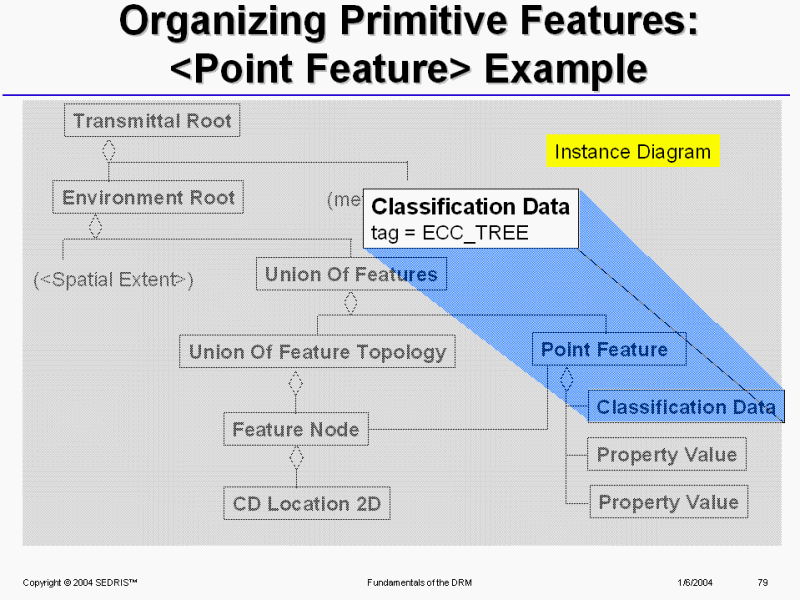
Organizing Primitive Features:
<Point Feature> Example |
80
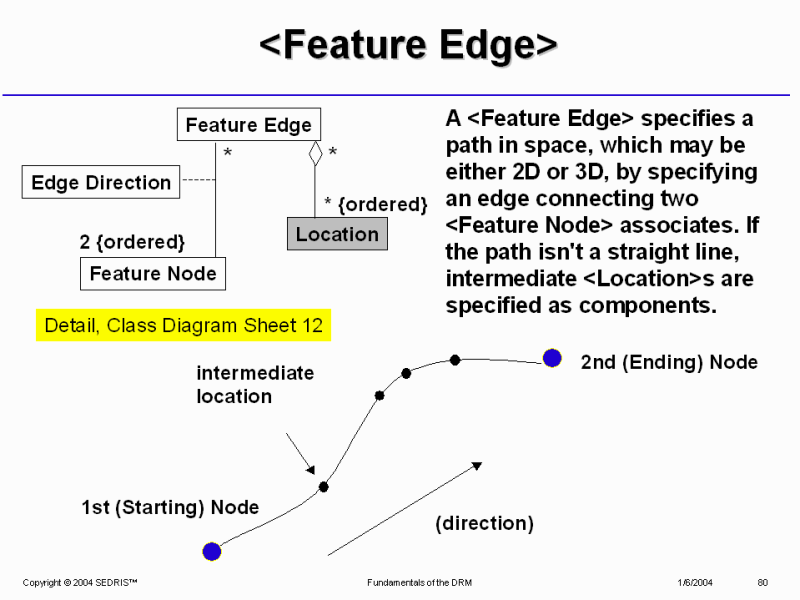
<Feature Edge> |
81
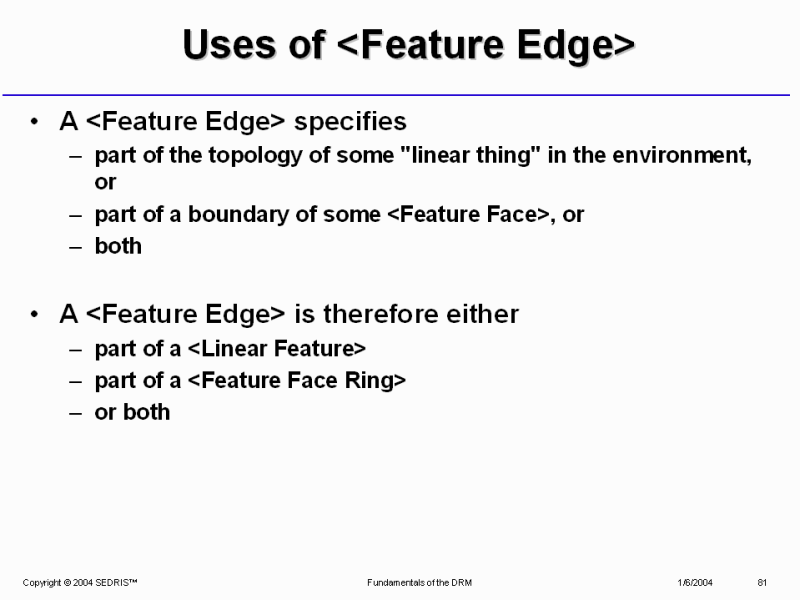
Uses of <Feature Edge> |
82
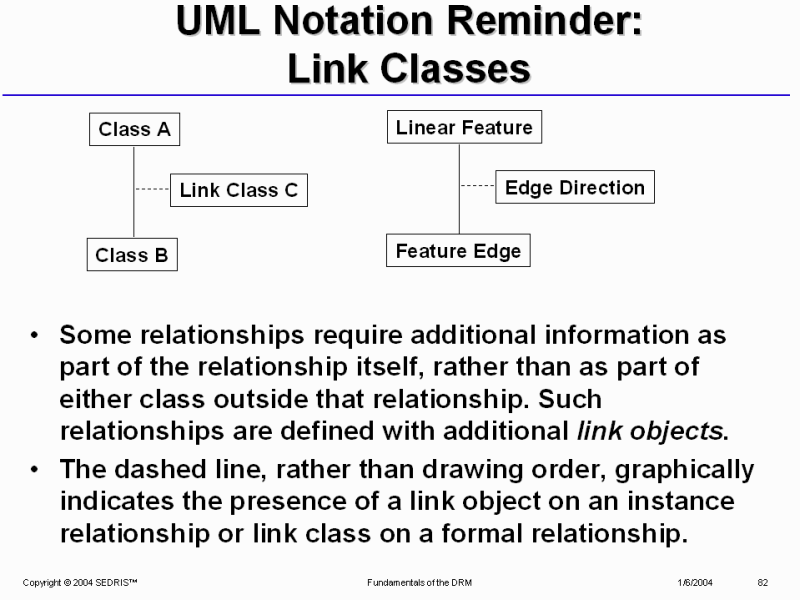
UML Notation Reminder:
Link Classes |
83
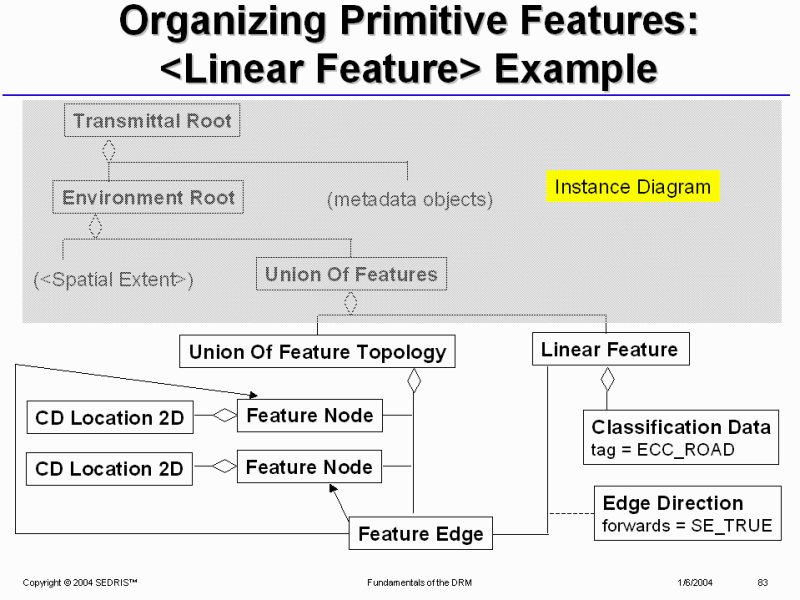
Organizing Primitive Features:
<Linear Feature> Example |
84
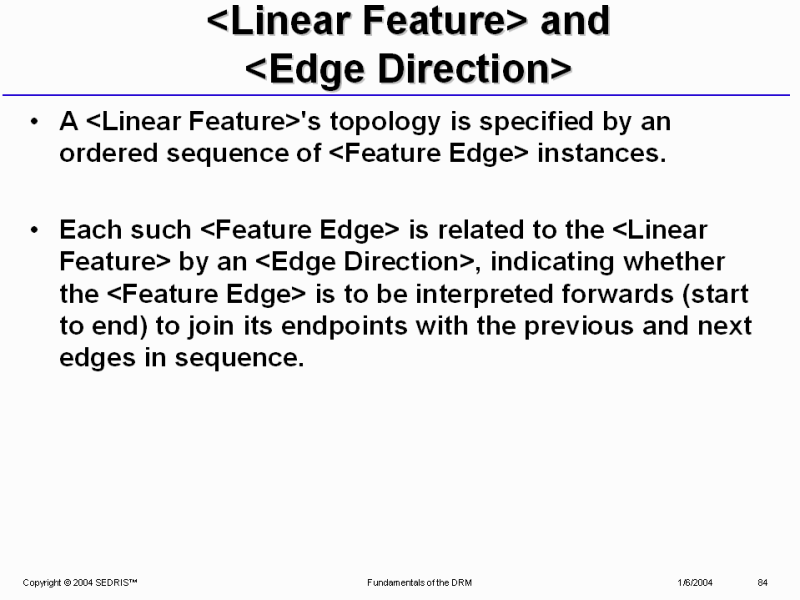
<Linear Feature> and
<Edge Direction> |
85
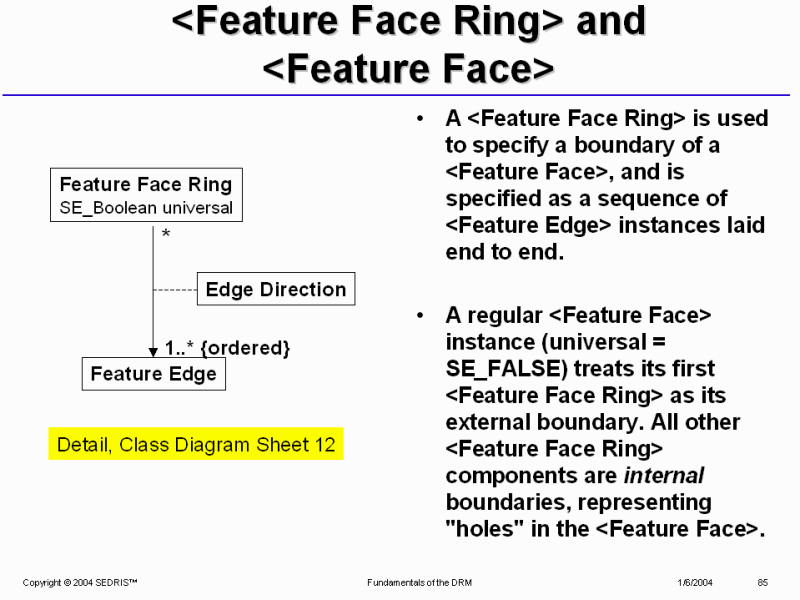
<Feature Face Ring> and <Feature Face> |
86

<Areal Feature> and
<Feature Face> |
87
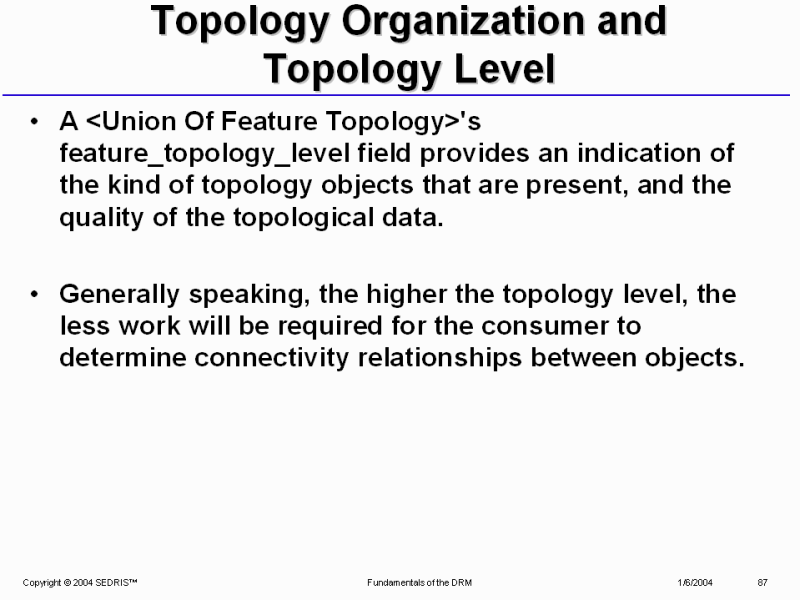
Topology Organization and Topology Level |
88
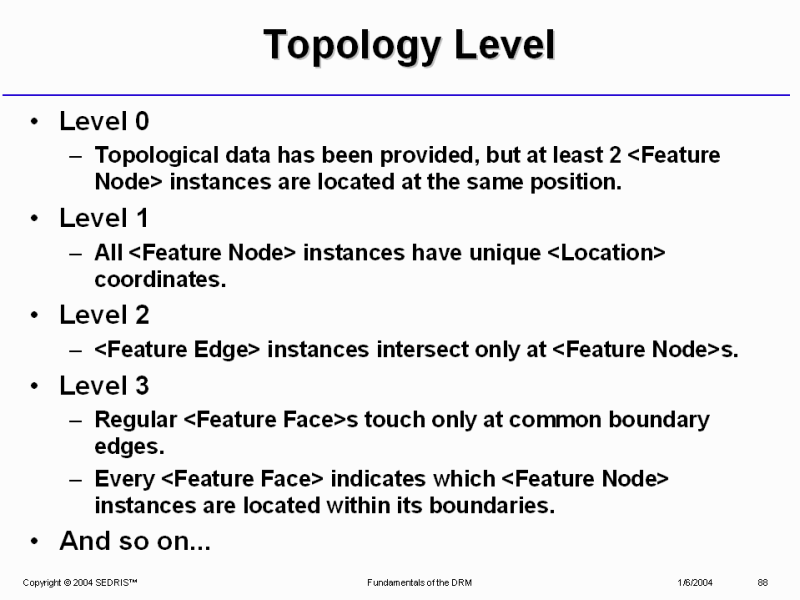
Topology Level |
89
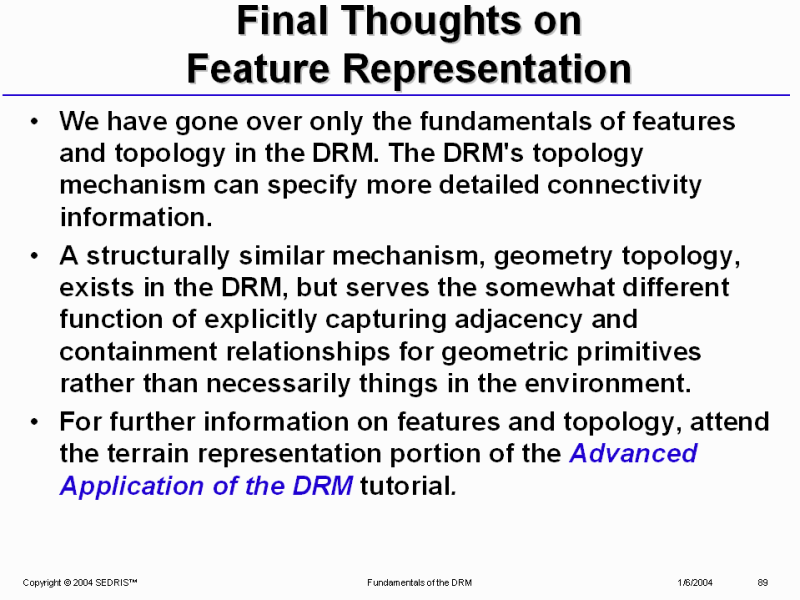
Final Thoughts on
Feature Representation |
90
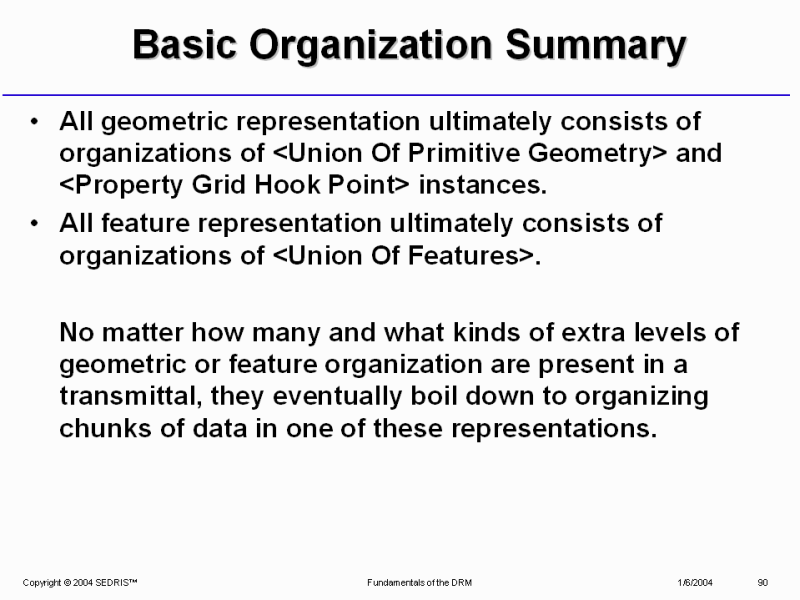
Basic Organization Summary |
91
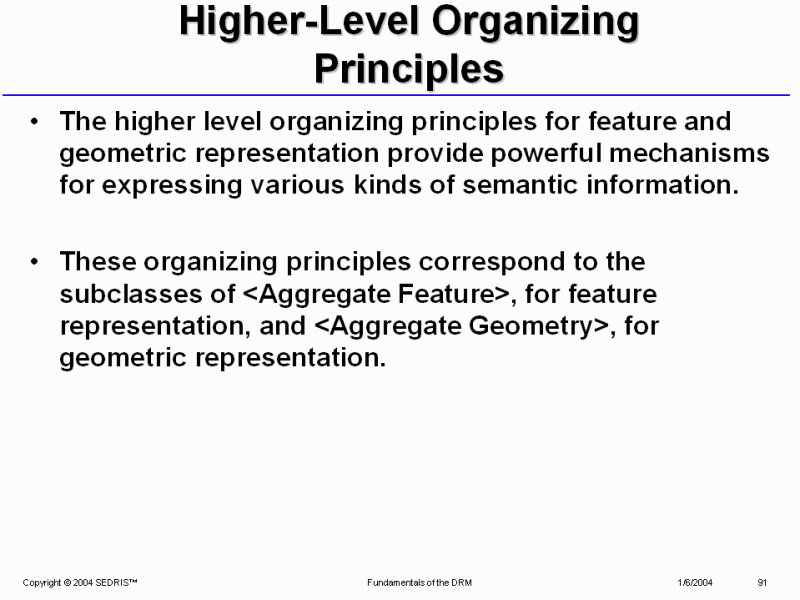
Higher-Level Organizing Principles |
92
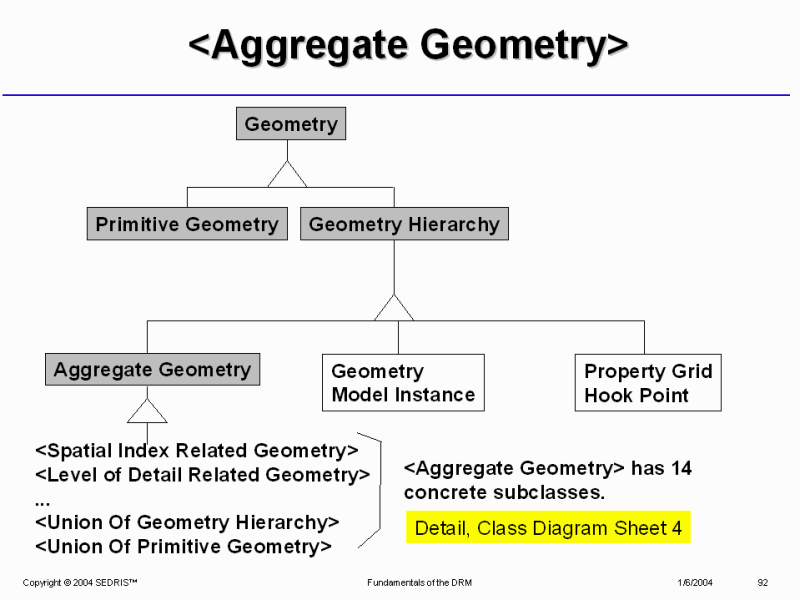
<Aggregate Geometry> |
93
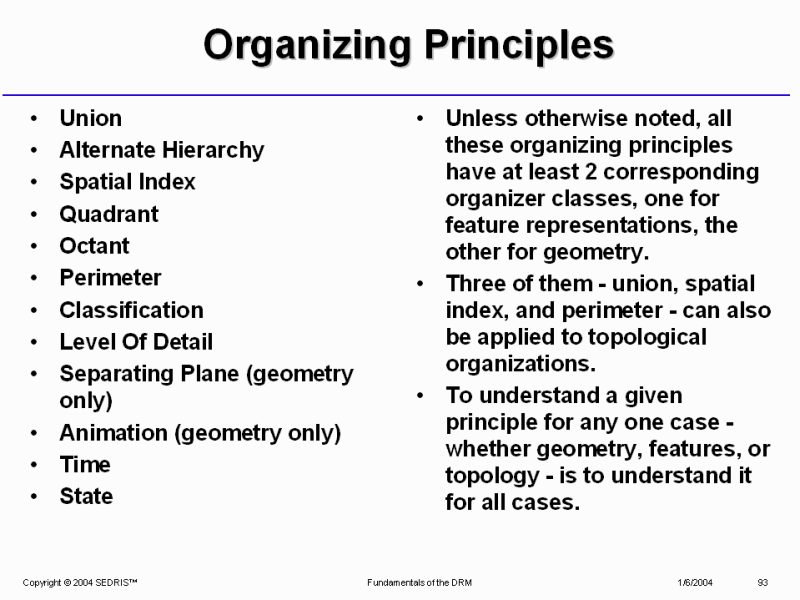
Organizing Principles |
94
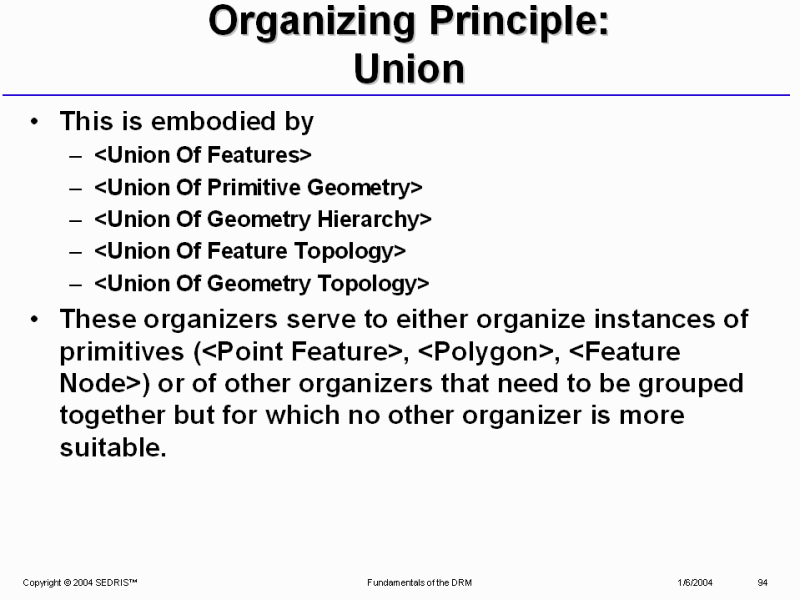
Organizing Principle:
Union |
95
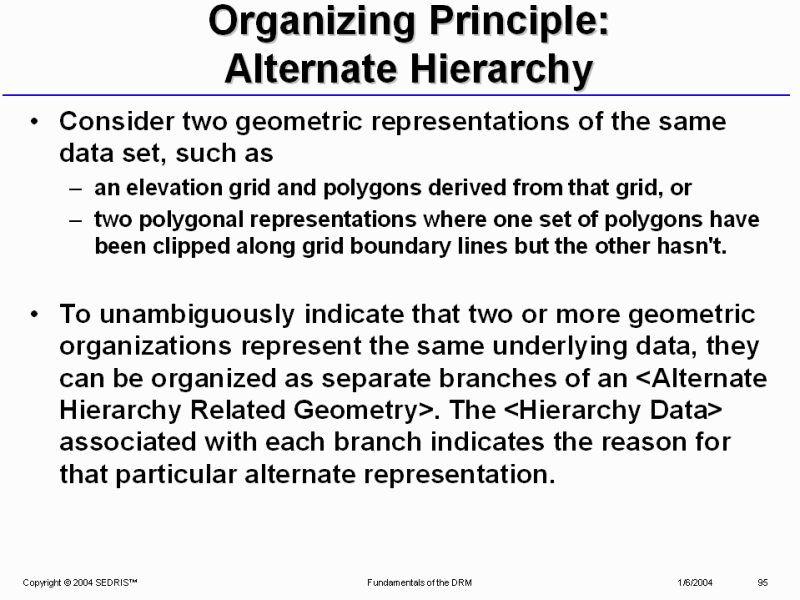
Organizing Principle:
Alternate Hierarchy |
96
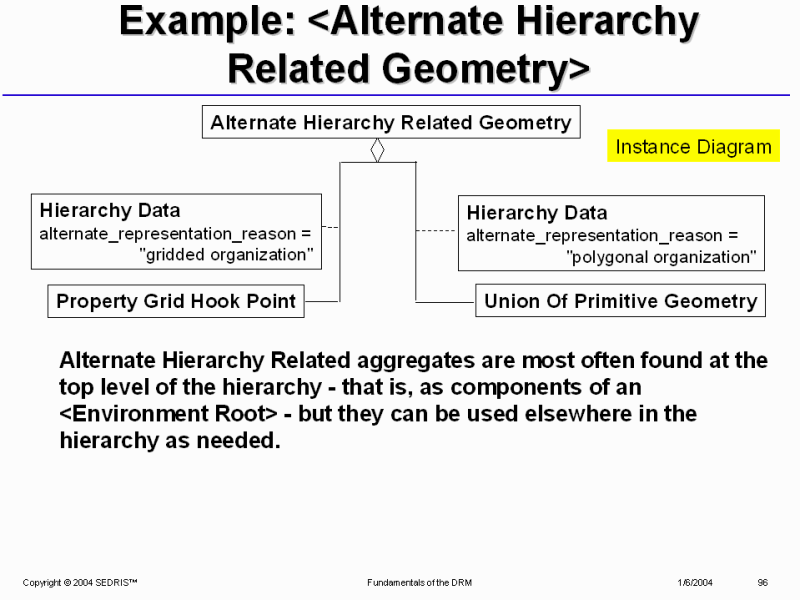
Example: <Alternate Hierarchy Related Geometry> |
97
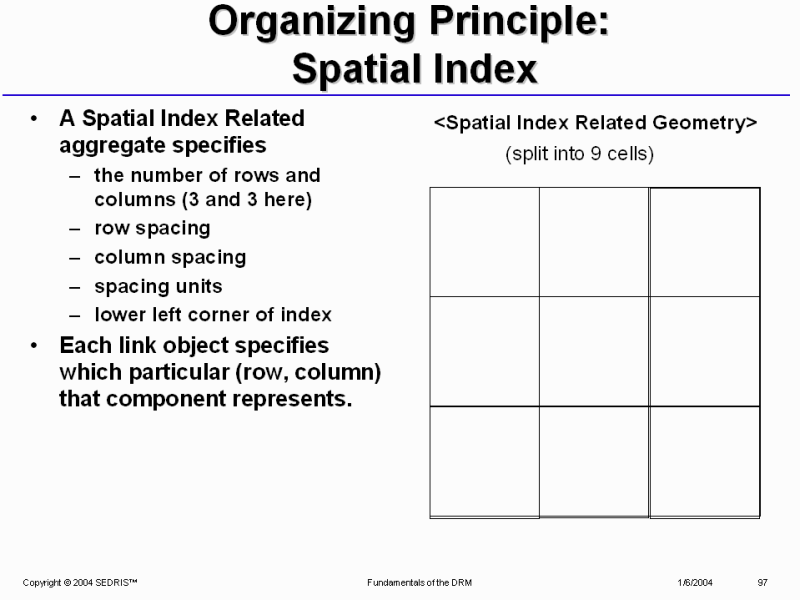
Organizing Principle:
Spatial Index |
98

Organizing Principles:
Quadrant |
99
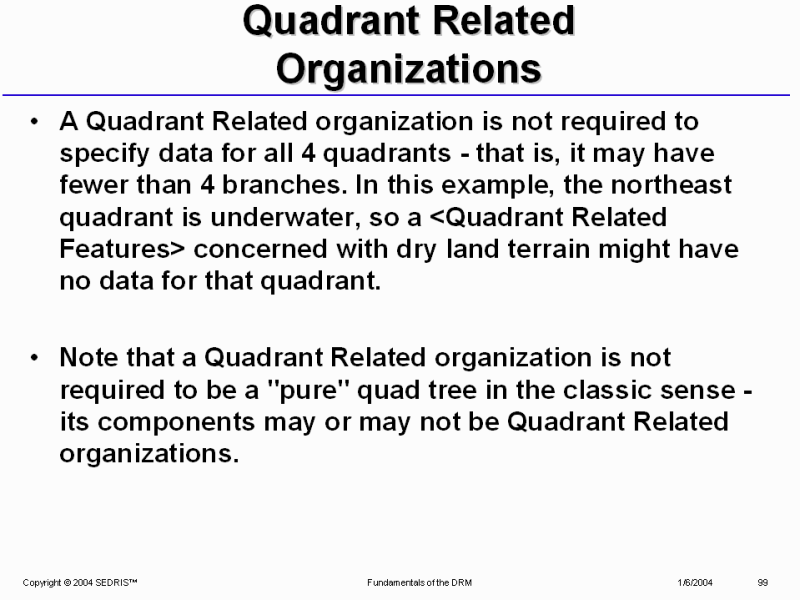
Quadrant Related Organizations |
100
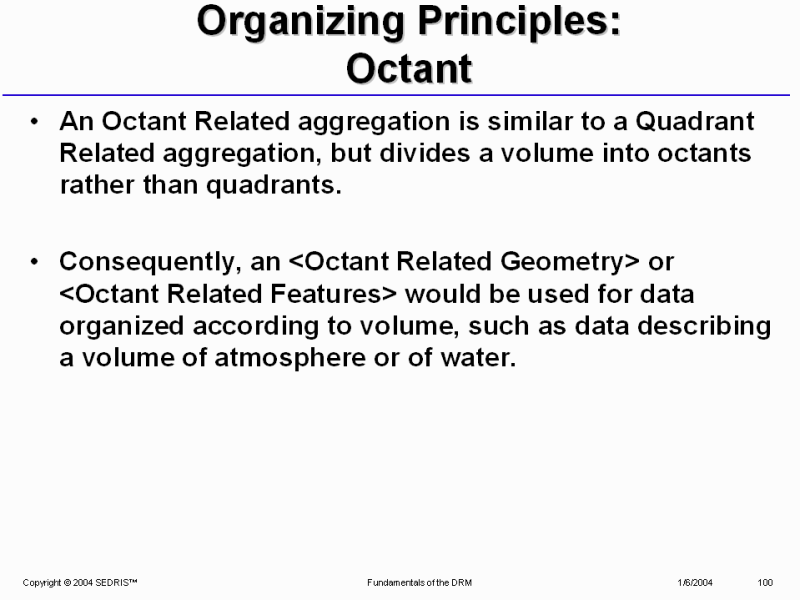
Organizing Principles:
Octant |
101
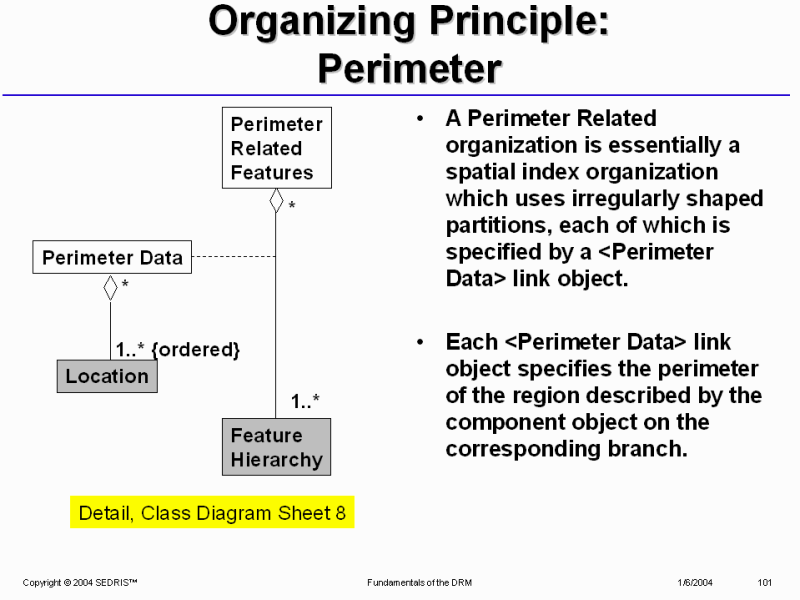
Organizing Principle:
Perimeter |
102
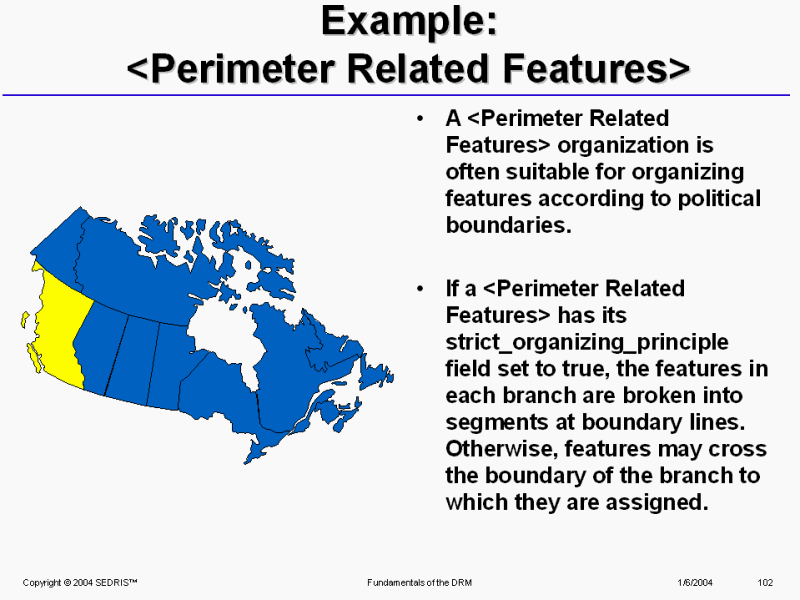
Example:
<Perimeter Related Features> |
103
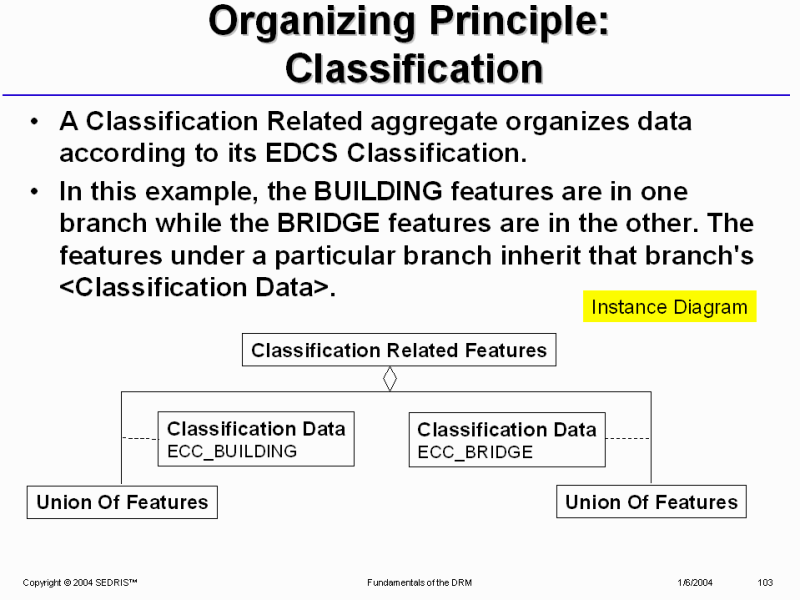
Organizing Principle:
Classification |
104
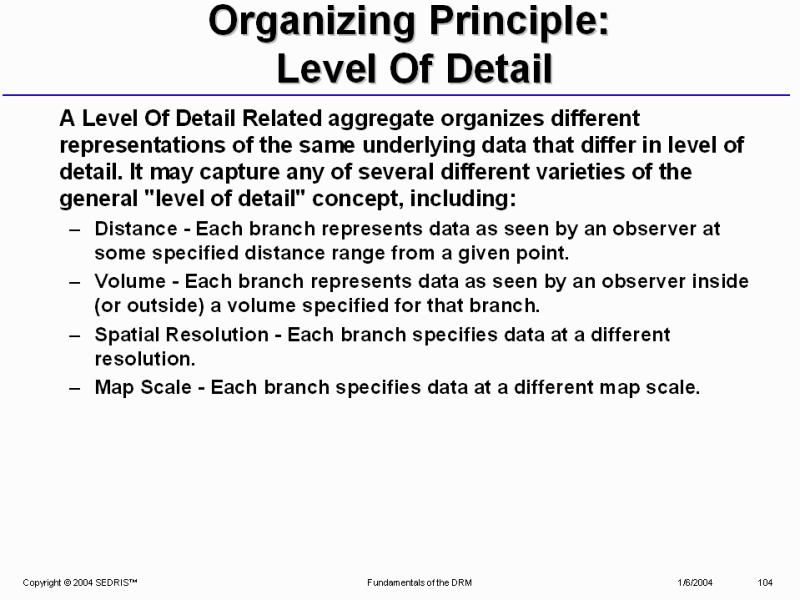
Organizing Principle:
Level Of Detail |
105
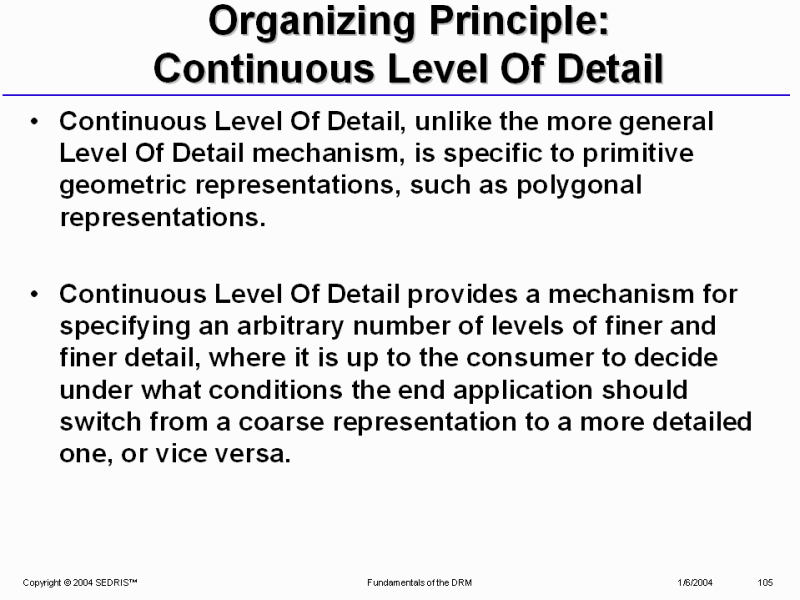
Organizing Principle:
Continuous Level Of Detail |
106
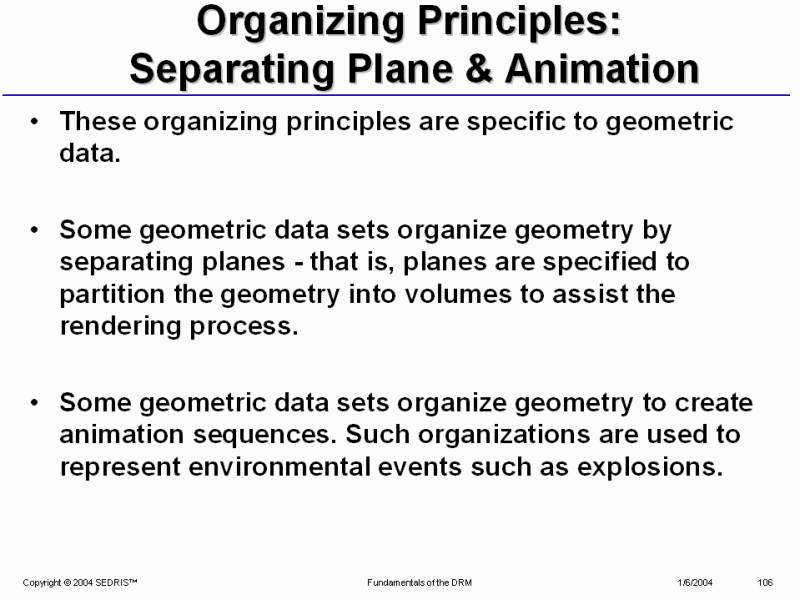
Organizing Principles:
Separating Plane & Animation |
107
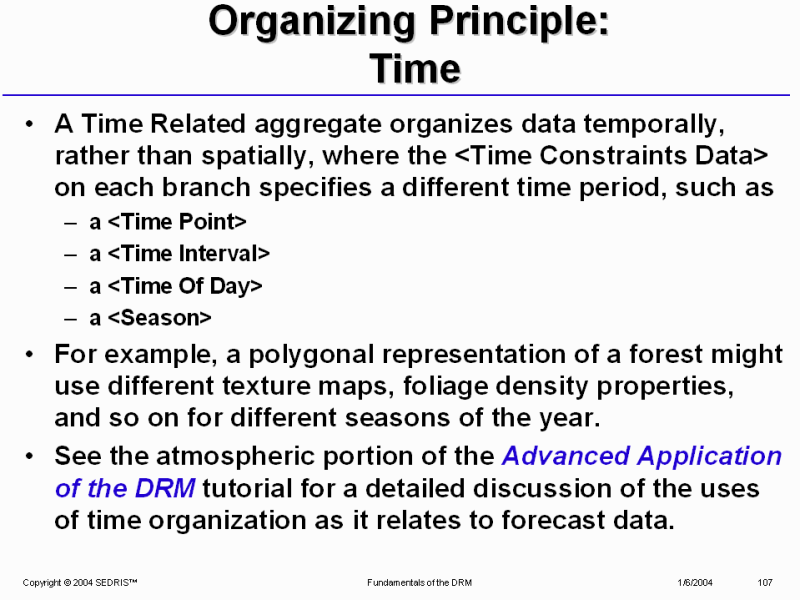
Organizing Principle:
Time |
108
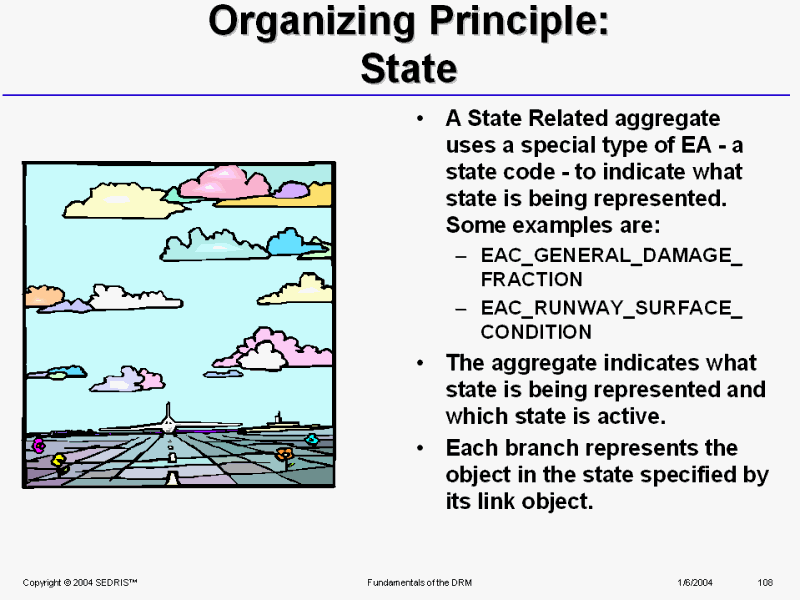
Organizing Principle:
State |
109

Example: State |
110
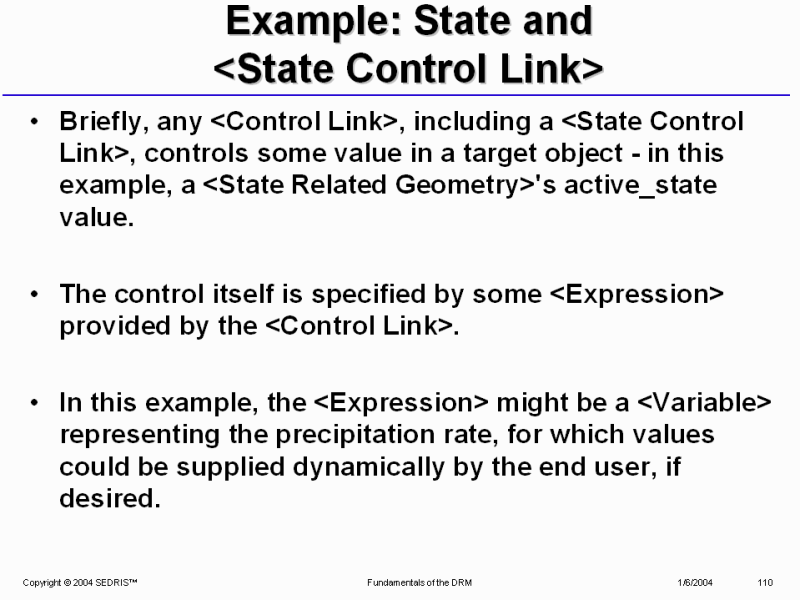
Example: State and
<State Control Link> |
111
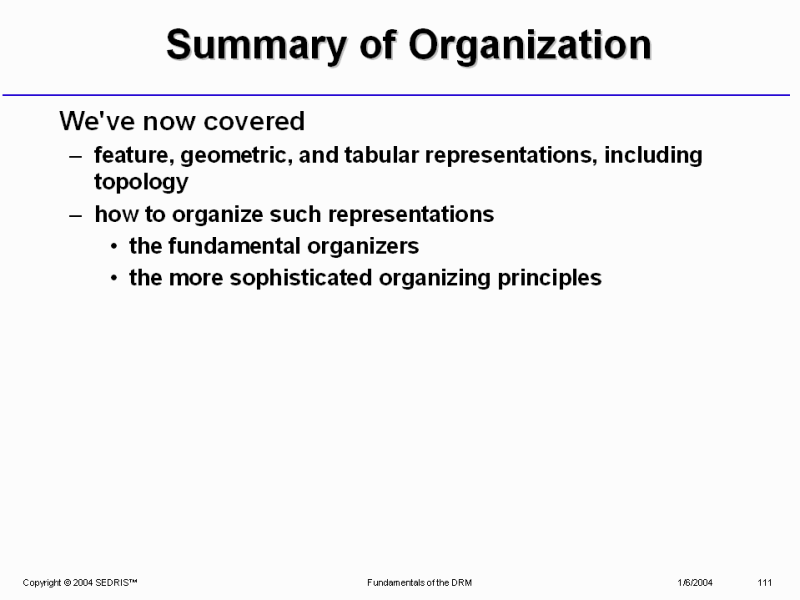
Summary of Organization |
112
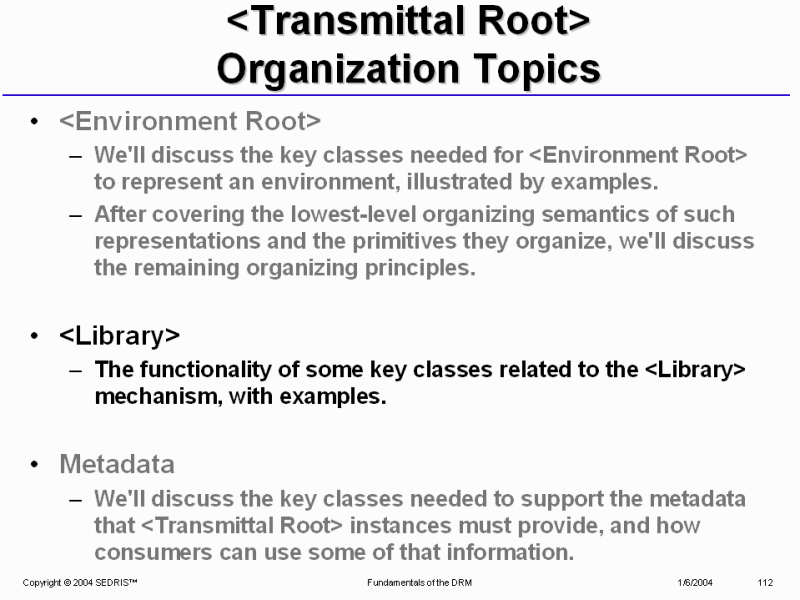
<Transmittal Root> Organization Topics |
113
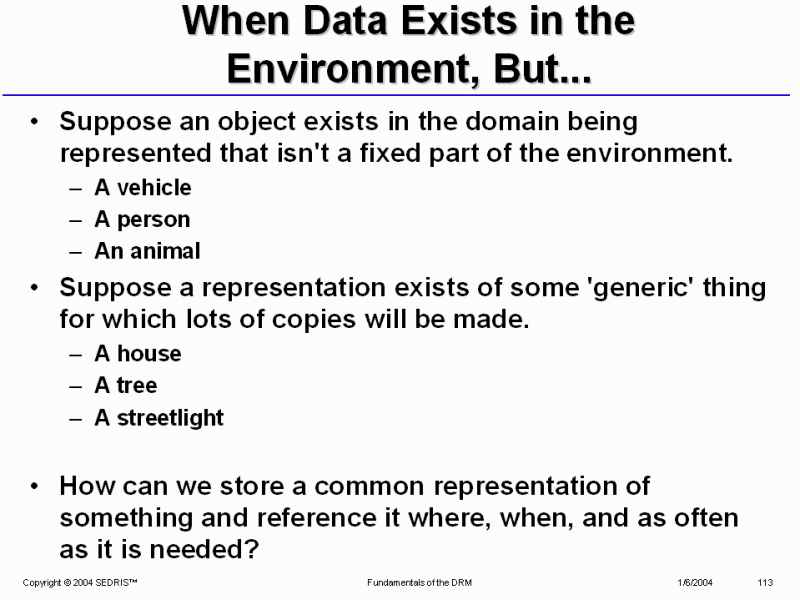
When Data Exists in the Environment, But... |
114
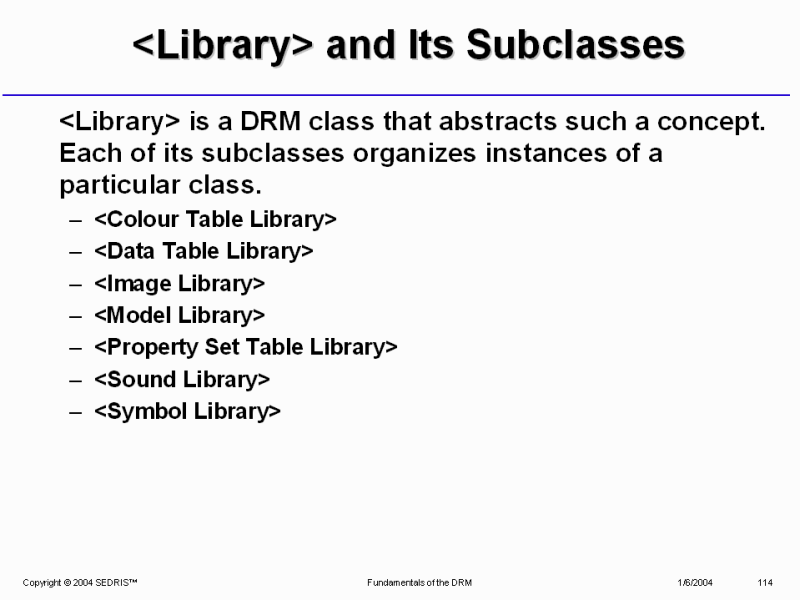
<Library> and Its Subclasses |
115
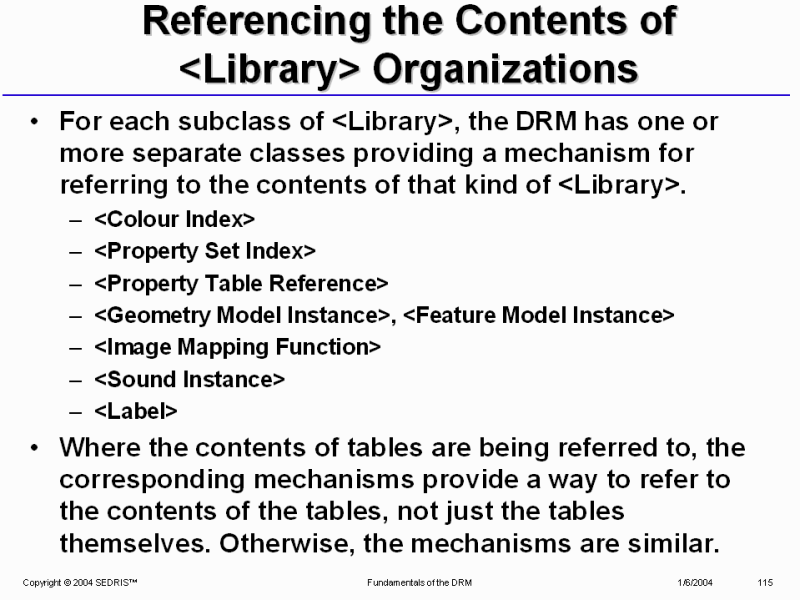
Referencing the Contents of <Library> Organizations |
116
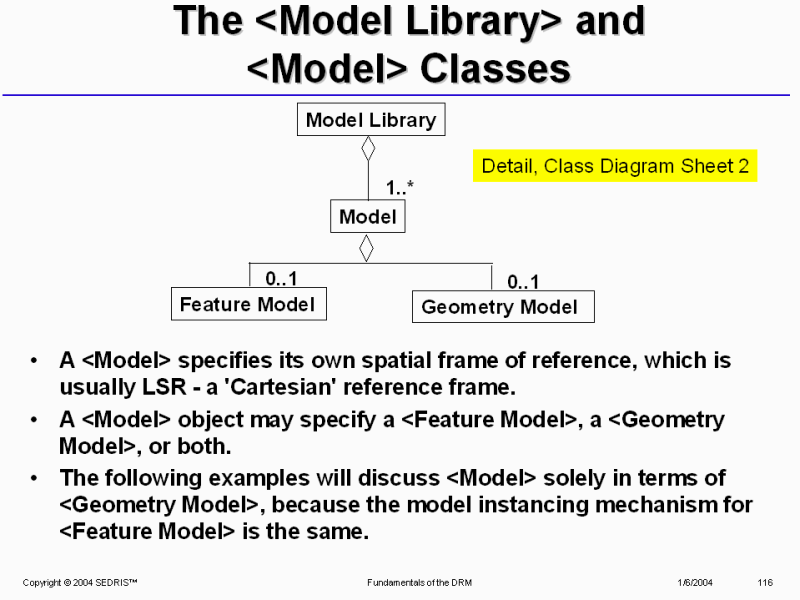
The <Model Library> and <Model> Classes |
117
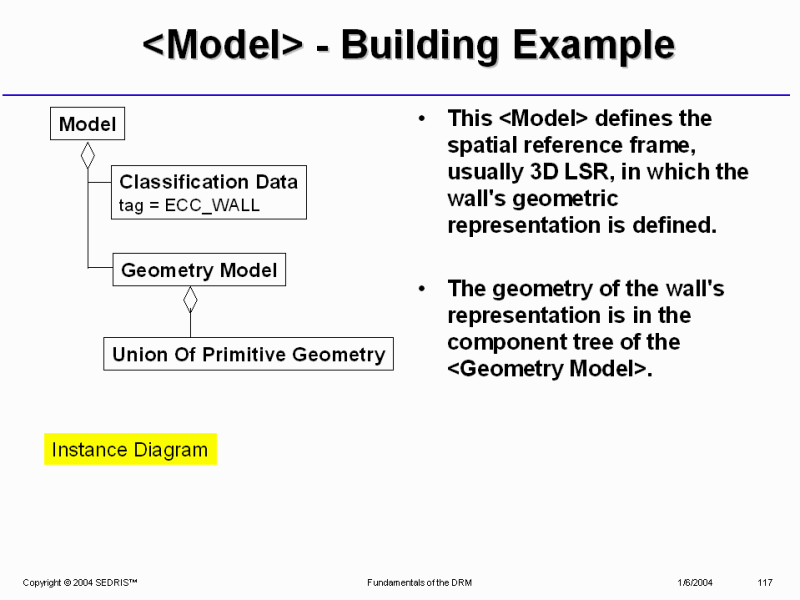
<Model> - Building Example |
118
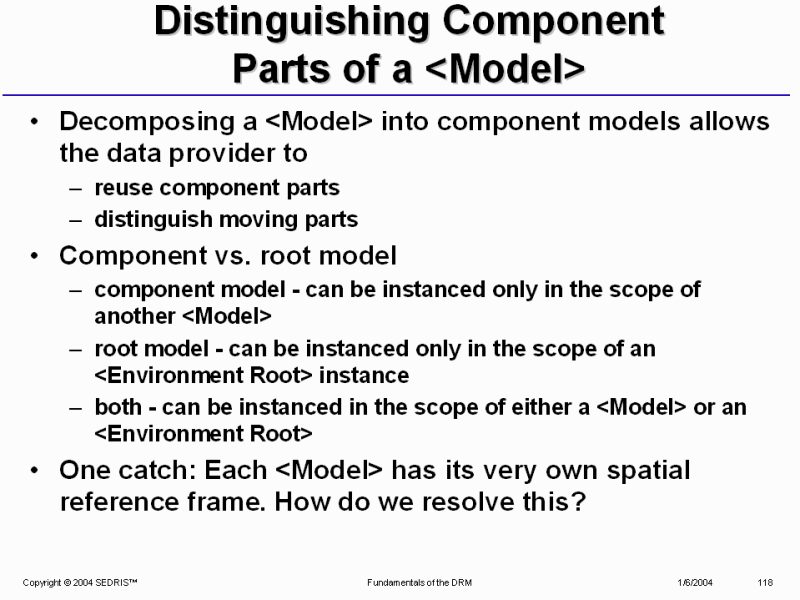
Distinguishing Component Parts of a <Model> |
119
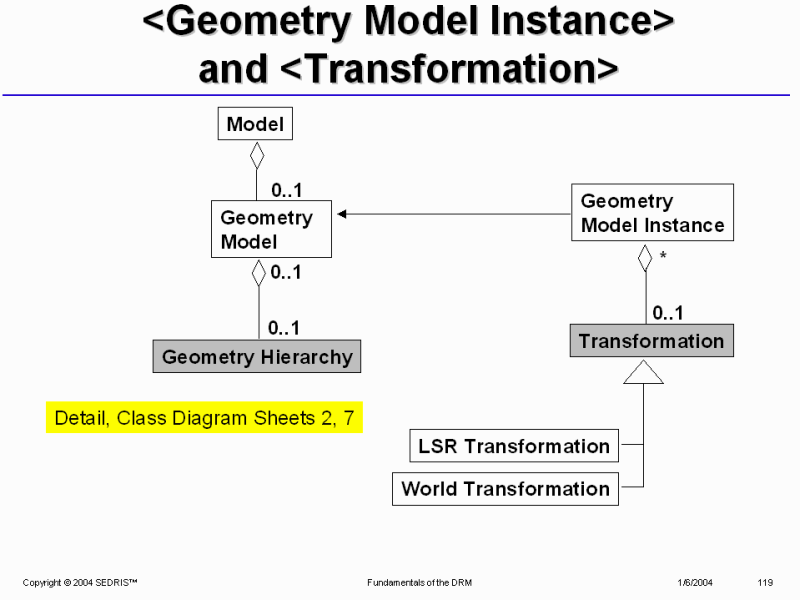
<Geometry Model Instance> and <Transformation> |
120
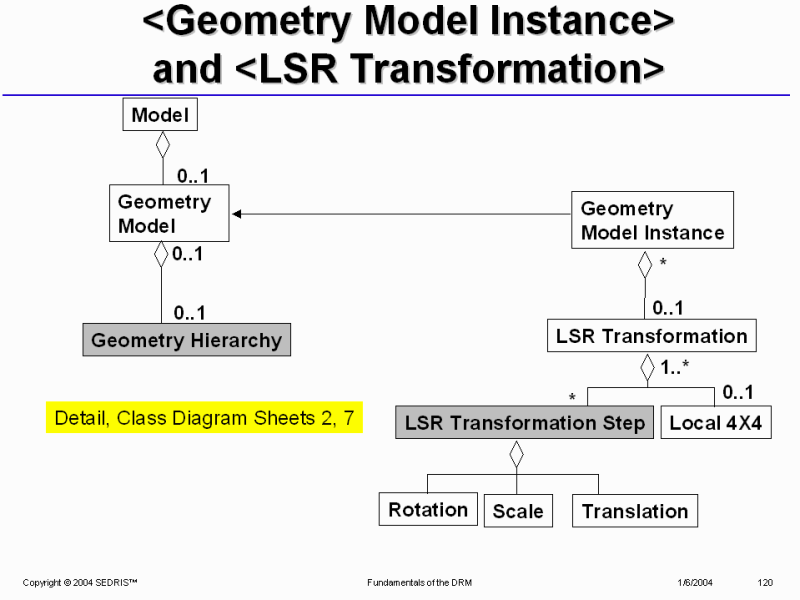
<Geometry Model Instance> and <LSR Transformation> |
121
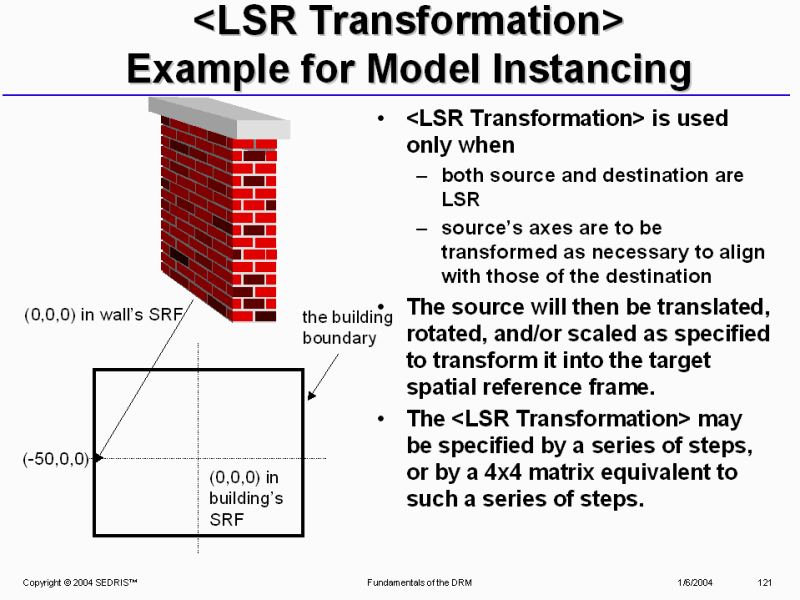
<LSR Transformation> Example for Model Instancing |
122
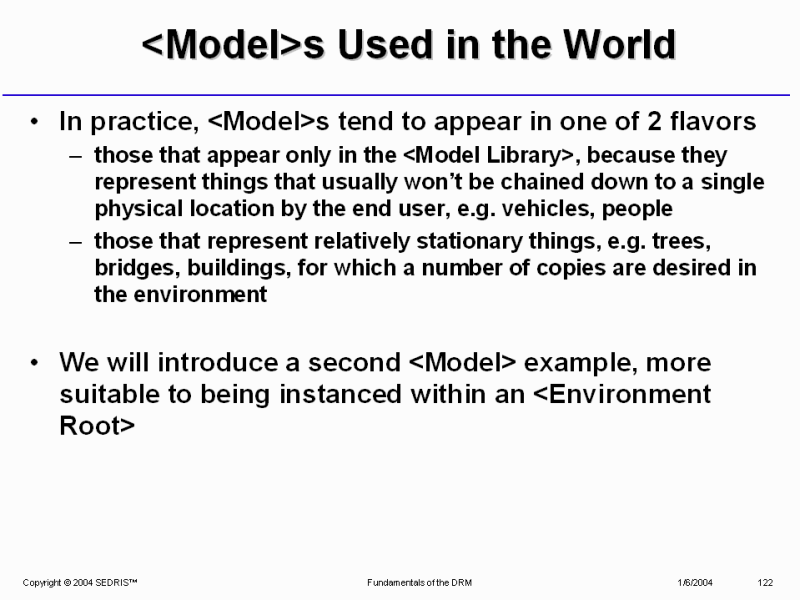
<Model>s Used in the World |
123
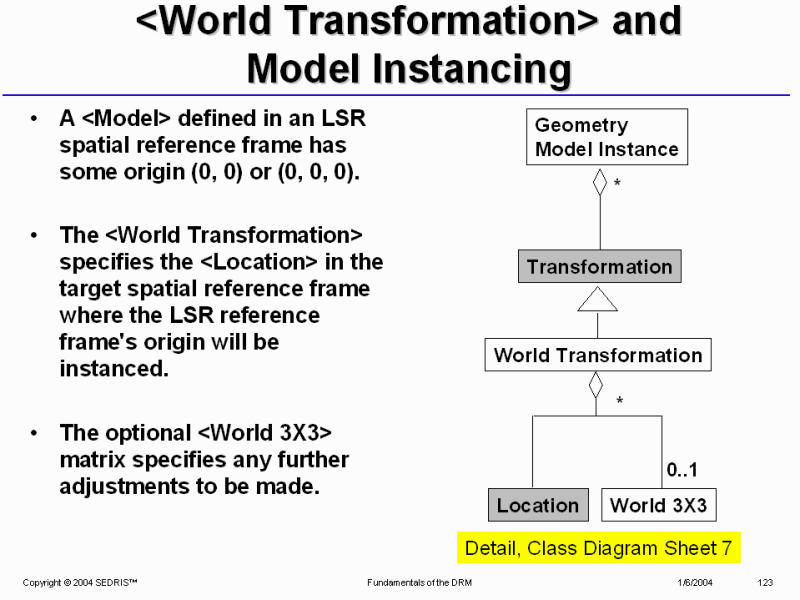
<World Transformation> and Model Instancing |
124
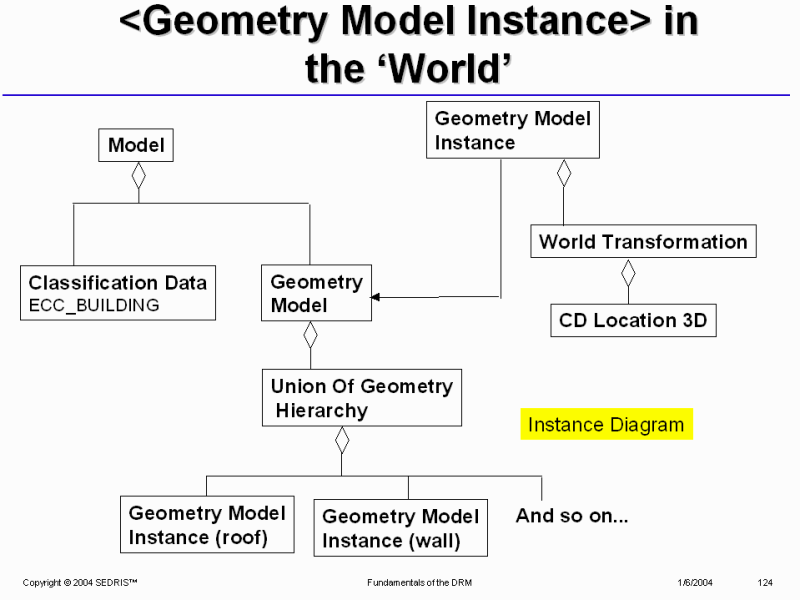
<Geometry Model Instance> in the �World� |
125
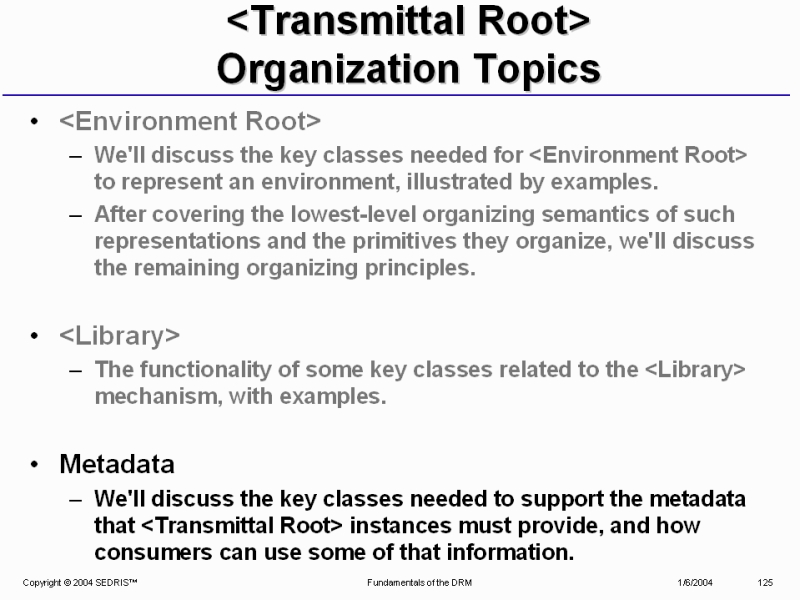
<Transmittal Root> Organization Topics |
126
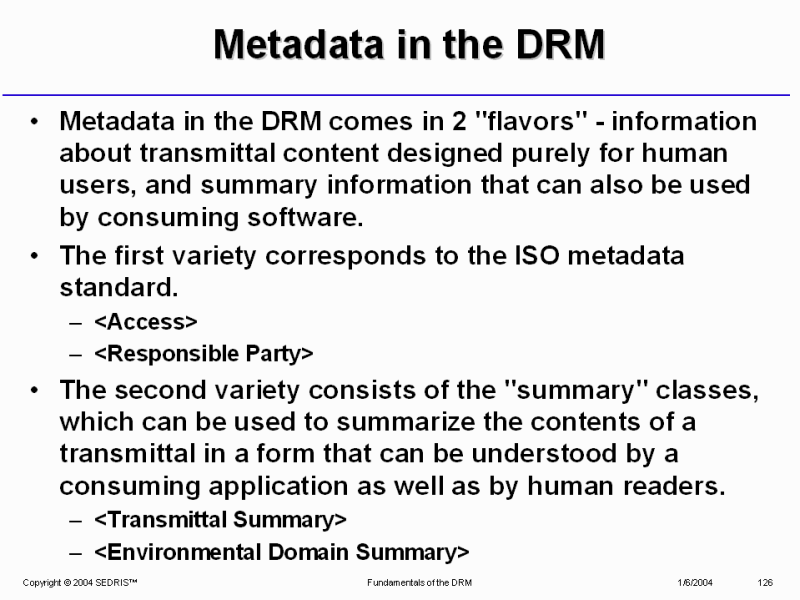
Metadata in the DRM |
127
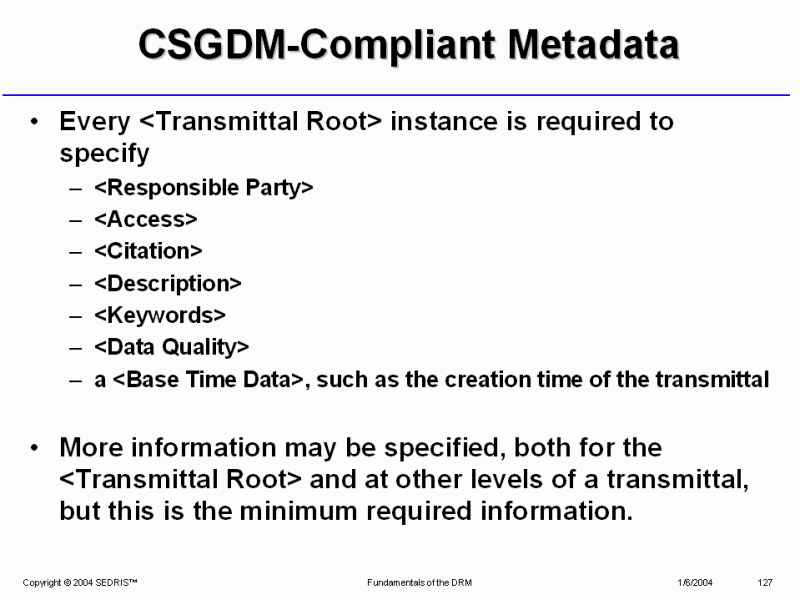
CSGDM-Compliant Metadata |
128
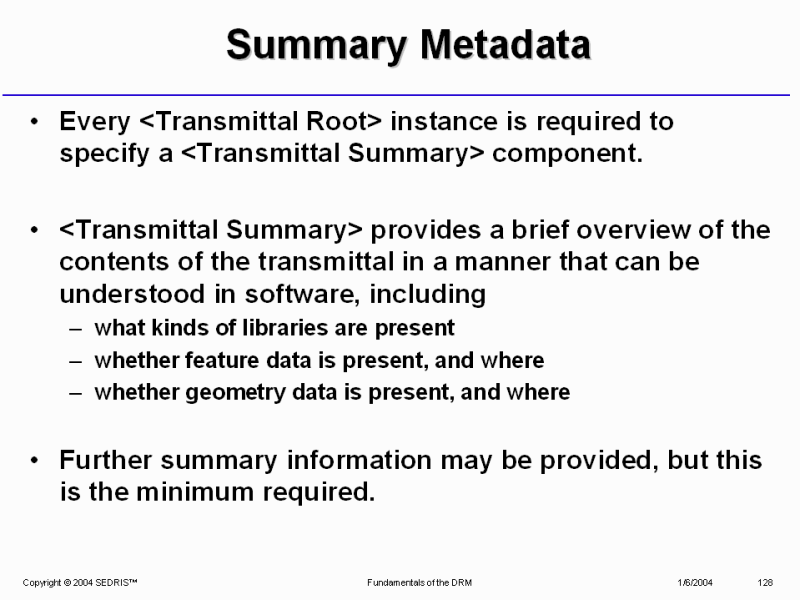
Summary Metadata |
129

Where To Go From Here |
. |
. |
. |